5 Reasons Why Your Cruise Control Stopped Working
- Updated: March 15, 2023
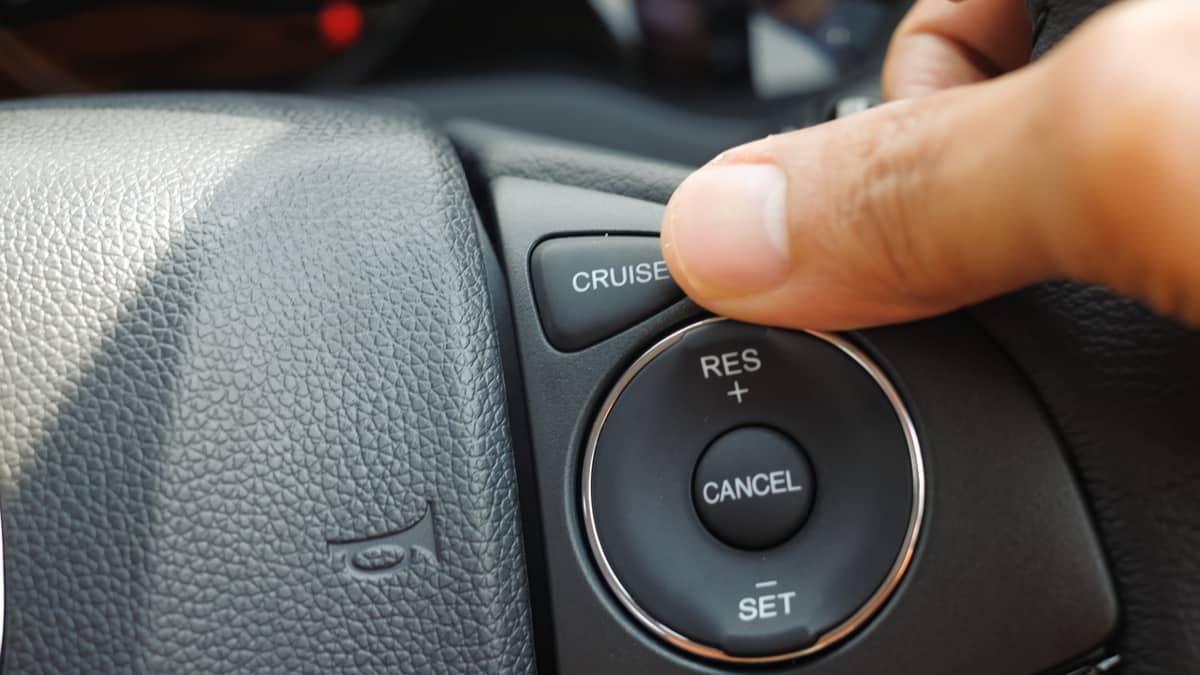
It would be difficult to find a vehicle on the road today without cruise control. This invaluable feature makes driving long distances easier but can also cause trouble when it malfunctions. Understanding the reasons your cruise control stopped working ensures that you can get the problem fixed quickly for a more enjoyable ride.
While this fault can cause issues with the cruise control system itself, there could also be an effect on the acceleration of your vehicle. That’s why you want to have it looked at as soon as you notice a problem. Let’s take a quick look at the reasons your cruise control may have stopped working.

Reasons Why Your Cruise Control Stopped Working
The most common reason a cruise control stops working is due to a blown fuse or a defective brake pedal switch . It can also be caused by issues with the throttle control system or the ABS. In older cruise control systems, it can be caused by a broken vacuum line.
Here is a more detailed list of the possible reasons your cruise control is not working:
1. Blown Fuse
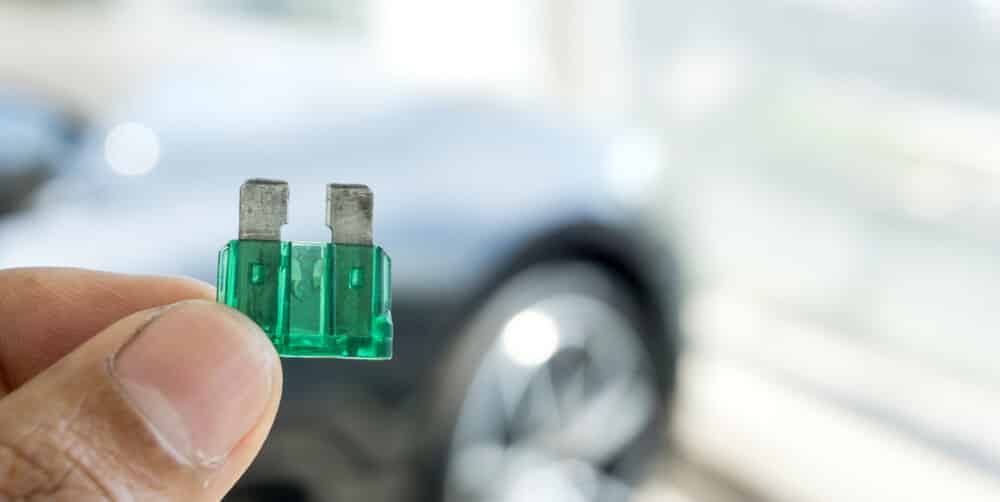
All electrical systems in the vehicle are controlled by fuses. Your cruise control system is attached to a fuse that can blow if there is a short circuit or fault. Without a good fuse, the cruise control system can’t work at all.
Thankfully, it’s not difficult to find and replace a blown fuse. Look in the owner’s manual to find the fuse that corresponds with the cruise control technology.
2. Defective Brake Pedal Switch
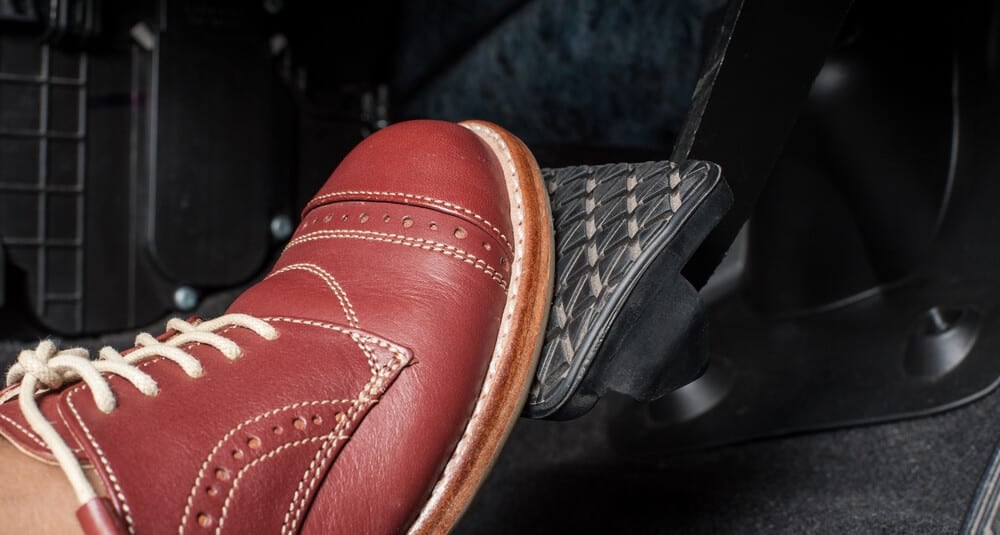
The brake pedal switch is responsible for turning the brake lights on and off based on the pedal position. Cruise control systems are designed to disengage whenever your brake pedal gets pressed.
Because the cruise control is wired into the brake pedal switch, any fault can cause it to stop working. When the brake pedal switch malfunctions, the car believes the brakes are engaged, causing the system to turn off automatically. Not only that, but your car’s brake light might also be stuck on, leaving confused drivers in your wake.
3. Malfunctioning Speed Sensor
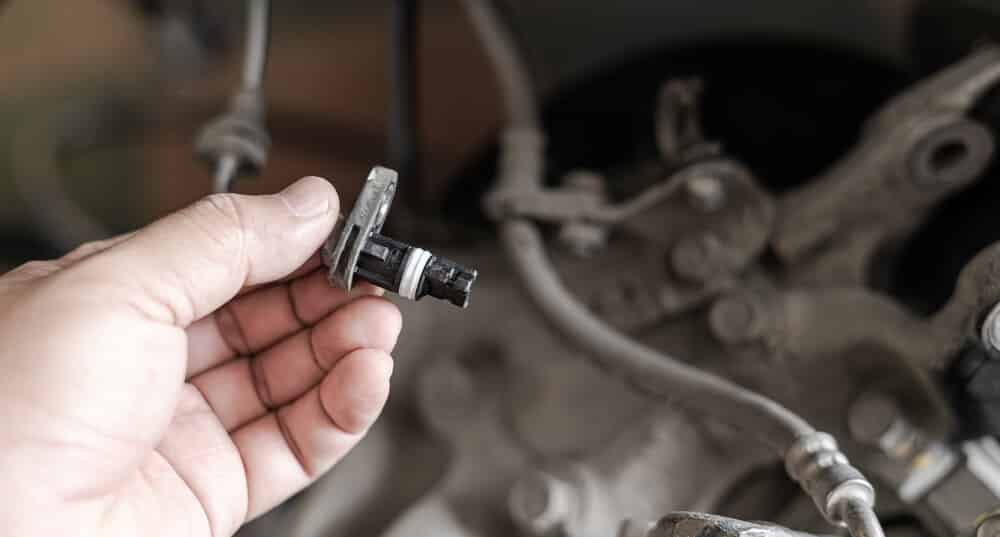
Speed sensors are located on every wheel or differential. The purpose of these sensors is to monitor the speed of the wheels to determine if traction control is needed.
The speed sensors are also part of the cruise control system. When a sensor fails, the cruise control can stop working and the speedometer might act strange as well.
If there is an issue with a speed sensor, it will often show with an ABS warning light or a check engine light on the dashboard.
RELATED: 3 Symptoms of a Bad ABS Wheel Speed Sensor
4. Electrical Issues
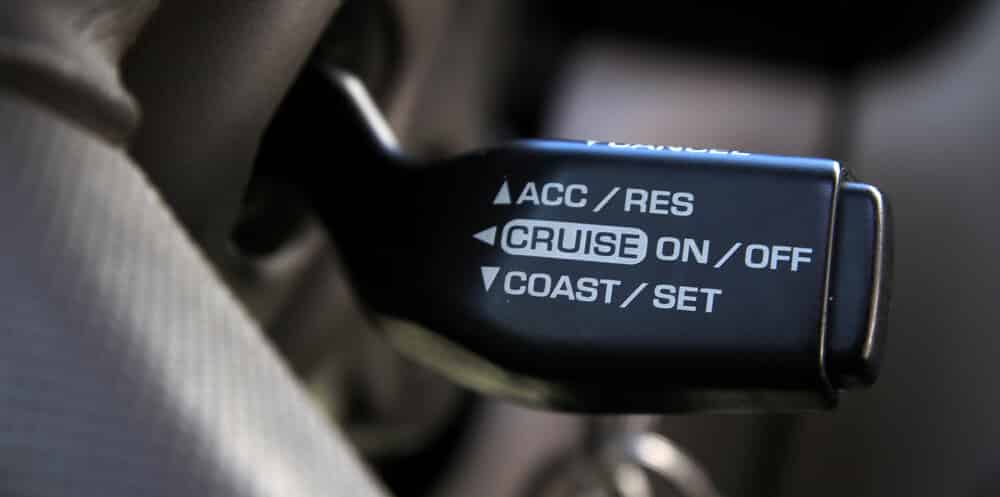
The cruise control system is electronic, with many components working together to make the system operate. If the cruise control fails to work, you want to check the wiring harness and associated connectors for a fault.
You also need to ensure that the voltage source is supplying enough power to the system. Even the smallest fault can cause defects with the cruise control. In many cases, there can be an issue with the cruise control lever or buttons causing the cruise control to not engage.
If your cruise control buttons are located on the steering wheel it could also be caused by a bad clock spring, which is located behind the steering wheel.
Check the system with an OBD2 scanner to look for any trouble codes related to the cruise control.
RELATED: 5 Symptoms of a Broken Clock Spring, Location & Replacement Cost
5. Damaged Vacuum Actuator, Hoses or Cable (Older cruise control)
If you drive an older vehicle with cruise control, you might have an issue with the vacuum actuator or the cable that connects to the throttle. If there has been damage done to the vacuum hoses or the actuator, the cruise control will stop working altogether.
Additionally, the cable linking the actuator to the throttle must be in good shape. If it has been broken, the cruise control will fail.
What is Cruise Control?
Cruise control is a feature that is used when you are traveling at a consistent speed. Cruise control was first introduced for automobiles in the 1950s. However, it took many years before it became a staple in the modern vehicle.
This electrical system allows you to set a predetermined speed and take your foot off of the gas pedal. If you are on a long drive, there is less fatigue because you don’t have to try to maintain your speed. Cruise control can also benefit fuel economy because the vehicle uses less fuel when traveling steadily.
In newer cars, you might be able to find adaptive cruise control , which is a smart technology. Adaptive cruise control allows you to travel at a predetermined speed, but it also helps to maintain a safe distance from the vehicles in front of you with the help of sensors. With conventional cruise control, you need to take over when the car in front of you slows down, but that’s not the case with adaptive cruise control.
There are also vehicles nowadays with not only cruise control, but fully self-driving vehicles . We will most likely see much more of this in the future.
Cruise Control Repair Cost
The cost to repair your cruise control system depends on what caused it to fail. If you need to replace a cruise control or brake switch, you might spend between $125 and $350, including parts and labor. However, the cost to change a fuse is only a few dollars and you can perform the replacement yourself in just a matter of seconds.
On the other hand, when something major fails, such as the actuator, you could be looking at a much higher repair bill. In some vehicles, the cost to replace a cruise control actuator can cost more than $700. These costs rise if you drive a luxury vehicle or one that is difficult to get parts for.
It might not seem immediately important for you to fix the broken cruise control, but this defective system can affect other performance aspects. You could start to notice issues with acceleration or have trouble with the speedometer. To play it safe, it’s always best to have the cruise control repaired as soon as you notice a problem.
Is there a fuse for the cruise control?
Yes. If the cruise control is installed from the factory, you should check your car’s owner’s manual for the fuse location. If it’s an aftermarket cruise control, you’ll need to follow the wires to find the fuse.
Does the brake switch affect the cruise control system?
Yes. The brake switch affects the cruise control system. The brake switch sends a signal to the cruise control system to let it know when the brakes are being applied for the engine to know when it should stop accelerating.
Will the cruise control work if the check engine light is on?
The cruise control function will be disabled when the check engine light is on in most car models, even if the cause of the check engine light is not the cruise control itself. This is mainly due to safety reasons.
Can a vacuum leak affect cruise control?
Older vehicles use vacuum to control the throttle for the cruise control, and in this case a vacuum leak can heavily affect the cruise control. However, modern cruise controls are fully electric and in most cases will not be affected by a vacuum leak if the check engine light is not illuminated.
Although many people may think that the cruise control system is unimportant and not worth spending money to repair, the problem can be caused by a faulty part that will affect the engine’s performance or durability. Therefore, it is best not to ignore the problem if your cruise control is not working without first diagnosing the car properly.
If your cruise control still isn’t working after trying all the tips in this article, it’s probably time to take it in for a professional opinion from a mechanic. It may be a more serious problem that requires replacement parts or repairs. In the meantime, drive safe and enjoy the open road!
Learn more:
- Brake Lights Not Working But Tail Lights Are? (How to Fix)
- Tail Lights Not Working But Brake Lights Are? (How to Fix)
- Brake Lights Stay On? (5 Causes & How to Fix it)
Categories: Electric , Troubleshooting
Related Posts
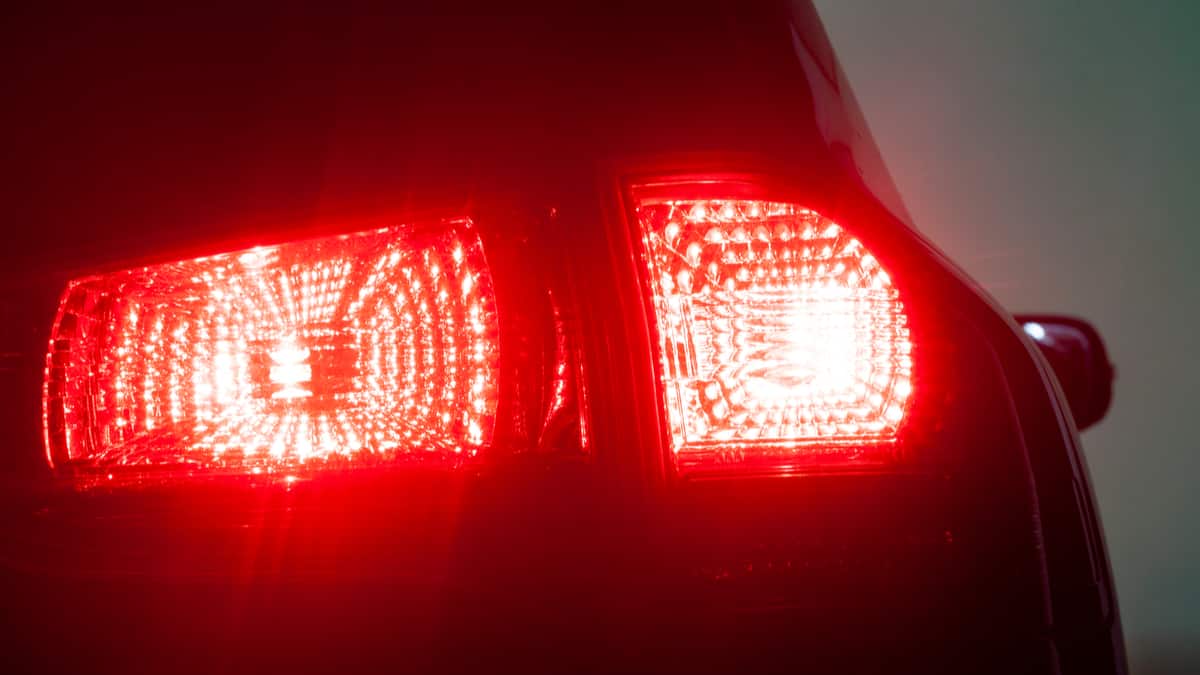
Latest Posts
- The Best & Worst Years Of Ford Explorer
- Best & Worst Years Of Toyota Corolla
- Best & Worst Years of Toyota RAV4
- When Should Your Child Switch To A Forward-Facing Car Seat?
- The Best & Worst Years Of Toyota Camry
- I Accidentally Put Premium Gas In My Car, What To Do?

- Featured threads
- Search forums
- Account Upgrade
Follow along with the video below to see how to install our site as a web app on your home screen.
Note: This feature may not be available in some browsers.
- Ford Tremor Forums
- Ford Tremor Problems [20-22]
Cruise Control Randomly Shuts Off / Stops Working
- Thread starter 86skier
- Start date Mar 14, 2023
- Mar 14, 2023
Tremor Fanatic

About 5-6 times now over the course of the last few weeks, the cruise control on my ‘22 will randomly shut off going down the highway. Afterwards, you can’t just reset it, as none of the cruise buttons will work, can’t turn it on, can’t shut it off, can’t increase or decrease speed. If I shut the truck off and restart, it’ll work again, otherwise if I continue driving, I have to wait about 10 minutes, then try it again and it’ll finally start working again. Sometimes it’ll work for 5 more minutes, sometimes for a few days. My last F150 (2016) developed the same issue, but not until my screen malfunctioned and needed a new APIM around 75k. That time though, I’d lose GPS all the time, voice controls didn’t work, and all kinds of different buttons would malfunction… but this time, it’s only the cruise, and far more random. Anybody else have this occur? Find a simple solution or cause? Or, is it off to the dealer… because that always turns into a royal pain.
Moderator 🛠️
Hmm, probably dealer unfortunately. I had an F150 that had some electrical gremlins but nothing like you described...
Something very similar to me. A few times my cruise would just kick off but I would get the adaptive cruise unavailable? I would try and re-engage cruise and no workie! I went into settings and disabled adaptive cruise and got my cruise back. Then next time I started truck it was all normal again. I thought maybe when they did the winch install but it hasn't done it in a few thousand miles so I never took it in.
catheadcatheadcathead
Melmoth the wanderer.
Both my 2021 and 2022 with adaptive cruise would do this. I could be out in the middle of nowhere on a nice road on a nice day and boom it turns off... Like other posters said, you can flip to normal cruise and after a while try flipping it back to adaptive. Else turn it off for a while. p.s. I wonder if it's due to the winch? I had the WARN winch on both trucks.
No adaptive cruise. Unless I'm a complete idiot and overlooked it. And no winch. BUT.... it did it again on my drive home from the office.
WhiskeyTango
Tremor fiend.
I had this same exact issue after I lifted my truck and also relocated my ACC module to install a light bar in same place where everyone is installing their winches. Somewhere on this forum someone posted how to reset it using forscan and that solved all my issues. Pretty easy to do, just have to find a stretch of road where you can drive for 15-20 minutes non stop, slower speeds around 25-30pm worked better. I initially did the reset on the highway and it wouldn’t complete the sequence until I drive slow in town traffic. Stop and go is okay just don’t turn off truck during the reset.
Tremor Junkie
WhiskeyTango said: I had this same exact issue after I lifted and relocated my ADD module from o install a light at where everyone is installing their winches. Somewhere on this forum someone posted how to reset it using forscan and that solved all my issues. Pretty easy to do, just have to find a stretch of road where you can drive for 15-20 minutes non stop, slower speeds around 25-30pm worked better. I initially did the reset on the highway and it wouldn’t complete the sequence until I drive slow in town traffic. Stop and go is okay just don’t turn off truck during the reset. Click to expand...
- Mar 15, 2023
AZsurveyor said: Say what?? This does what ...?? Click to expand...
Tuxedomouse
Faux tremor pioneer.
I had a similar problem with my old Chevy Avalanche, the issue was a flaky brake switch. Dealer can probably figure it out, but it's a possibility.
- Mar 29, 2023
Tremor Buff
does anybody know if it's possible to keep the regular cruise control active even when you shut the truck off ? like if you're on a freeway trip, every time you shut the truck off, you have to press the cruise control button again to activate upon restart. the cruise icon in the dash also goes off every time you shut the truck off. i have adaptive and regular. i mainly just use the regular cruise. is there something in forscan i can do ? thanks for any help
SuperDuty6.7
Tremor member.
I have had this happen. Around this time when my Adaptive Cruise Control wigs, I then seem to have a hyper sensitive collision warning when I am driving in traffic. It’s will flash on my screen red and starts to apply the brakes which is a cheap thrill! Now today with 3,000 miles I have my first check engine light. When I checked engine code it says U3012…? Not sure it is connected to this issue. But my 2022 has some sort of electrical issue for sure…
- Apr 25, 2023
Posting here as im not sure if my problem is the same or not. My adaptive cruise shut off twice yesterday in stop and go traffic but it seemed to happen when it was going less than 10/15 miles an hour. Truck would accelerate to 30/40, then when cars stopped again it would slow down to 15 and just shut off. May have been the same issue and just chance of the speed at happened at. may have to play with it more. I almost hit the car in front of me thinking the truck would stop itself but it never did because the cruise control turned itself off and was just coasting. 2022 lariat tremor. On my f150 the cruise control would literally stop to 0, and even accelerate again in stop and go traffic if you pressed the resume button. Our super duties should still do that too right?
22 & older do not have stop & go adaptive cruise. It is a feature now available on the 23's.
njburn said: 22 & older do not have stop & go adaptive cruise. It is a feature now available on the 23' Click to expand...
Melwinn said: Gotcha, so is there a threshold in which it just turns off? I cant believe the 2022 super duty does not have this but my 2019 f150 did! Click to expand...
Modman said: Correct. F150 had it for the 19 and 20 model years. SD just got it for 23... What I liked about the system on the F150 is it would hold the truck at a stop without your foot on the brake, which is just a convenience, but a nice one. Something you don't realize you like until it's gone. Click to expand...
- May 3, 2023
Hadn't given this issue of mine much thought in awhile because it was working fine for a couple weeks... then, cruise shut off twice on the way home yesterday. Tried manually resetting sync and notta... both times. Had to wait about 10 min each time before it came back. Today, shut off again... tapped the brake pedal, tried again, and it worked. Drove another 10 miles and it stopped working again.... tried resetting notta, thought I had to wait it out, but tapped the brake again... and good to go. 'Gonna have to investigate the brake pedal switch....
- Jun 2, 2023
Fishieflakes
SuperDuty6.7 said: I have had this happen. Around this time when my Adaptive Cruise Control wigs, I then seem to have a hyper sensitive collision warning when I am driving in traffic. It’s will flash on my screen red and starts to apply the brakes which is a cheap thrill! Now today with 3,000 miles I have my first check engine light. When I checked engine code it says U3012…? Not sure it is connected to this issue. But my 2022 has some sort of electrical issue for sure… Click to expand...
- Aug 29, 2023
Blizzard850
Tremor newbie.
86skier said: About 5-6 times now over the course of the last few weeks, the cruise control on my ‘22 will randomly shut off going down the highway. Afterwards, you can’t just reset it, as none of the cruise buttons will work, can’t turn it on, can’t shut it off, can’t increase or decrease speed. If I shut the truck off and restart, it’ll work again, otherwise if I continue driving, I have to wait about 10 minutes, then try it again and it’ll finally start working again. Sometimes it’ll work for 5 more minutes, sometimes for a few days. My last F150 (2016) developed the same issue, but not until my screen malfunctioned and needed a new APIM around 75k. That time though, I’d lose GPS all the time, voice controls didn’t work, and all kinds of different buttons would malfunction… but this time, it’s only the cruise, and far more random. Anybody else have this occur? Find a simple solution or cause? Or, is it off to the dealer… because that always turns into a royal pain. Click to expand...
Tremor Forum Fav 👍

Ford Tremor Photos

Latest Discussions
- Latest: Canyon Trekker
- 31 minutes ago
- Latest: The808Tremor
- Today at 1:15 AM
- Latest: Optimus
- Today at 12:57 AM
- Latest: pickleknuckles
- Today at 12:56 AM
- Latest: RedDawg
- Today at 12:54 AM
- Latest: Lunch Box
- Today at 12:50 AM
- Ford Tremor Talk 2707
- Ford Tremor News 340
- Introductions 1710
- Ford Tremor Towing 504
- Ford Tremor Purchasing 1189
- Ford Tremor Photos & Videos 419
- Ford Tremor 7.3l Engine 389
- Ford Tremor 6.7l Diesel Engine 386
- Ford Tremor Member Builds 329
- Ford Tremor Meet Ups 0
- Ford Tremor Versus the Competition 44
- Ford Tremor Forum and News
- 2020 Ford Tremor of the Month Winners
- 2021 Ford Tremor of the Month Winners
- FordTremor.com March 2022 Group Buy
- Ford Tremor Ranger Forums
- Ford Ranger Tremor Forum
- 2022 Ford Tremor of the Month Winners
- 2023 Ford Tremor of the Month Winners
- Ford Tremor Regional 81
- Ford Tremor Classifieds 1130
- Off-Topic 896
- Ford Tremor Modifications [20-22] 918
- Ford Tremor Wheels & Tires 565
- Ford Tremor Suspension 422
- Land Cruiser Forum
- Why is my Cruise Control not Working? [14 reasons]
14 Reasons Why your Cruise Control may NOT Be Working
The reason for your cruise control not working could be as simple as a blown fuse to really complex electrical problems. Defective switches, sensors, and even “check engine” light, all could contribute to this problem.
If you like to travel and own a car fitted with cruise control, you know how comfortable it can be to maintain a constant speed! When a cruise control system gets damaged, it is just as annoying as it is dangerous.
Cruise control is connected to several components of the car, and when it fails it can mean that something could be wrong with the CC itself. It could also be a signal that something wrong is happening with any other component of the car.
Why is my cruise control not working?
In this article, I am going to show you the main reasons why your cruise control may not be working (from the simplest to the more complex ones):
Reason #1. Bad or blown fuse
The cruise control’s circuit (like many other electronic components of your car), is protected by a fuse that will blow to protect the system from short circuits and overloads. If your vehicle’s cruise control fuse is blown, the system will stop working.
You can replace the fuse with a new one of the correct amperage, according to your vehicle’s owner manual. If the new fuse doesn’t blow again, everything will be ok; if the fuse blows again, you have to keep searching for what is making that fuse blow.
Reason #2. Burnt brake lamp
Some cruise control systems are disabled when the brake lamp is blown. Check your brake lights. If you find a burnt brake light, just replace it and test the system again.
Reason #3. Defective brake light switch
A defective pedal switch can also make your cruise control stop working. Remember that all cruise control systems are automatically disengaged as soon as the brake pedal is pressed down.
If the cruise control didn’t stop working when a fault in the brake light or brake pedal switch is detected, it could be dangerous; that’s why the CC control unit constantly monitors the status of this switch.
Reason #4. Clutch pedal switch deactivation (for manual transmission vehicles)
Cruise control is deactivated when the clutch is pressed by the driver in manual transmission cars. The CC control unit monitors this switch as it does the brake light switch.
Reason #5. The vehicle speed sensor is not working
A vehicle’s cruise control needs to be able to determine the vehicle’s actual speed. This enables the system to determine how much throttle needs to be applied in order to keep a certain speed, among other things.
The speedometer speed sensor is not always the sensor used by cruise control. Some systems rely on the ABS speed sensors, others do an average and some have a dedicated speed sensor.
If the system can’t detect the vehicle’s speed or detects a problem with the speed sensor, it will stop working.
Reason #6. Faulty throttle body or accelerator pedal
In modern engines, the throttle body is driven electronically by the engine control unit (ECU), and the accelerator pedal works like a potentiometer. The processor managing the cruise control system will act as the accelerator pedal, sending more or less voltage to the throttle body to open or close the throttle body’s butterfly valve.
If there is a problem with your vehicle’s throttle body, your cruise control won’t work.
Reason #7. Check Engine light is “ON”
If your vehicle instrument panel has the “Check Engine Light” ON and the fault stored in the ECU’s memory is related to some component vital for the cruise control system, you will not be able to use your cruise control until you have fixed that problem.
Reason #8. Faulty steering wheel’s spiral cable/clock spring
The spiral cable connects all the switches from the steering wheel (in case your steering wheel has switches) to their respective modules. This includes the connection of the driver’s airbag.
These wires (also called clock springs) are prone to get cut. A faulty spiral cable may have an open circuit making it unable to reach the vehicle’s cruise control module (CCM).
Reason #9. Bad Cruise Control Switch
Your vehicle’s cruise control switches have internal contacts that wear out. If that happens, the switches won’t be able to contact the CCM.
Depending on which buttons are faulty, your whole cruise control can stop working or just some functions won’t work.
Reason #10. Electrical problems with different modules and wiring
Modern cruise control systems use electrical and electronic components, and they are connected to other modules and systems of the vehicle. Some of these systems are the ECU, ABS, and/or Stability Control Systems like ESP.
The CCM makes a check of these systems once the key is switched to ON, and if some of these components are not working in optimal conditions, the CCM won’t engage. If none of the above items seem to be the problem, the vehicle needs to be taken to a professional who can perform a full scan of all the components, check that all the voltages, wiring harnesses, and connectors are ok.
The professional is going to detect if there are any connection problems between modules and will be able to find the reason why the cruise control is not working.
Reason #11. Dirty or faulty camera or sensor (only for vehicles fitted with adaptive cruise controls)
Newer vehicles have adaptive cruise control systems. These devices not only keep a fixed speed by the driver; they also can detect other vehicles ahead and behind and are able to keep a safe fixed distance to avoid collisions.
Some of these new systems have laser sensors while others have cameras to calculate the right distance to follow considering the vehicle’s speed and acceleration. Any problem with the sensors will prevent adaptive cruise control from working.
Problems with older cruise control systems
Before electronic injection and electronic throttle bodies, some cars had the cruise control function. In fact, the first cruise controls were introduced in the early 1950s.
These electromechanical cruise controls are pretty simple. They have a vacuum actuator connected to the throttle linkage that opens and closes the throttle to maintain the vehicle’s speed.
In early injection cars, the throttle linkage was replaced by a cable. Some common faults of these old cruise control systems are:
- A faulty vacuum actuator. Vacuum actuators have a diaphragm inside that can break. Any vacuum leak will lead to failure.
- Faulty vacuum control solenoid. It can prevent the actuator from operating normally.
- Broken throttle cable. If the throttle cable or linkage is broken, it needs to be replaced.
I hope you enjoyed my guide to cruise control problems. Even though it doesn’t explain how to fix your cruise control, it gives you an idea of where to start looking if you are going to do it yourself.
Now you will have an idea about how the system works and what are the possible reasons why it’s failing (in case you have to take your vehicle to a shop to be repaired).
Attention! This article is for informational purposes ONLY and is NOT a replacement for professional advice! ALWAYS consult your local specialist for an appropriate solution to your problem. All statements, prices, contact information, recommendations, and reviews contained herein came from sources that we believe to be reliable, but the accuracy or completeness thereof is not guaranteed. Please contact the service provider for complete details and updates.
I always Know and admit that even though I went to school for ABR grad. In 1994 3.36gpa still have go go back to school for upgrades due to vehicle advancement but I still learned alot although I am dealing with an 05 f150 stx which has more recalls then a auto parts store where the employees don’t know a inerta. Switch from an ignition switch ,thanks for the information
Leave a Reply Cancel reply
Your email address will not be published. Required fields are marked *
Save my name, email, and website in this browser for the next time I comment.
Privacy Overview
Automated page speed optimizations for fast site performance

7 Reasons Why Cruise Control is Not Working
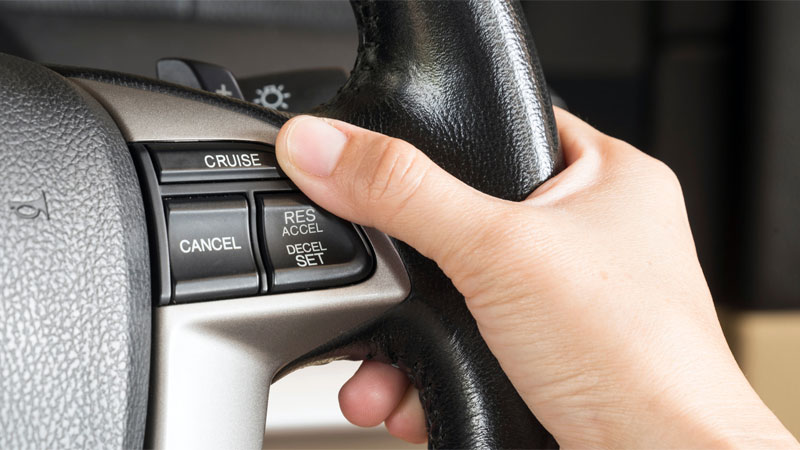
Cruise control has been around since the late 1950s. There was a time when you could only find this convenient feature in a few model vehicles. Nowadays, it seems like virtually every model vehicle on the road has a cruise control feature.
Cruise control not engaging seems like a trivial issue, but the inability to activate this convenient feature can certainly dampen any road trip. While cruise control failures “rarely” pose safety risks, determining the root cause is necessary to restore its use. Let’s look at the common causes of cruise control malfunction.
Table of Contents
Cruise Control Problems (Accelerating or Maintaining Speed)
If your cruise control feature malfunctions and stops working altogether, you may not think it’s an immediate concern. You’ll probably figure that you just can’t use cruise control anymore until you get the problem fixed.
However, the problem with your cruise control might be related to an acceleration issue too. In fact, there are components of cruise control which can have an adverse effect on the acceleration if those components are bad. That is why you need to be aware of what causes cruise control issues.
Common Causes of Cruise Control Not Working
There are several possible causes of cruise control not working. Below are the top 6 most common causes. Check each of these areas and see if they’re the cause of your cruise control issue. In many cases, the remedy to the problem is not that complicated or expensive.
1) Cruise Control Switch

The cruise control switch is what you use to set your cruising speed. This information is transmitted to the engine control unit and cruise control module in order to sustain the acceleration speed.
If the contacts inside the cruise control switch were to wear out, then the module and unit might not receive the necessary speed information it needs to keep the acceleration going. In response, the system will deactivate entirely and cancel the current cruise acceleration set.
2) Brake Light Switch
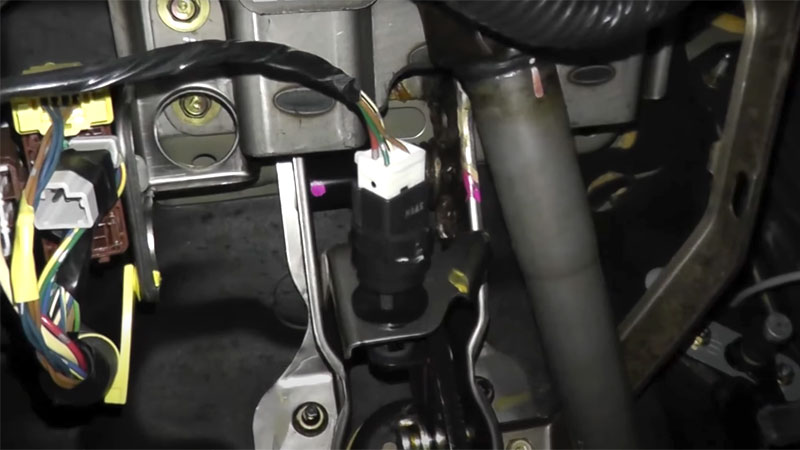
Normally, you press the brake pedal to turn off cruise control. The brake light switch must be detected by the cruise control system for this to happen.
If it cannot detect the switch, then cruise control will disable itself automatically until the brake light switch issue is fixed.
A faulty brake light switch can also cause your brake lights to stay on .
3) Blown Fuse
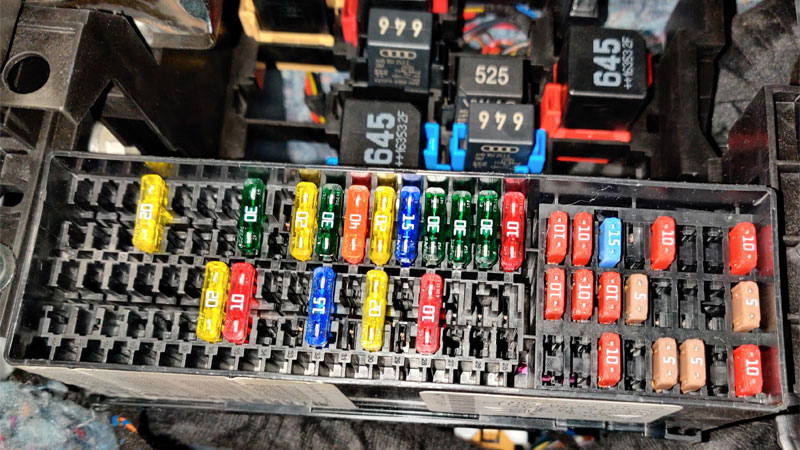
The electrical components of the cruise control system are protected by fuses. Like inside your house, it is possible to blow a fuse. This will cause the cruise control system to turn off until the fuse is replaced.
4) Check Engine Warning Light
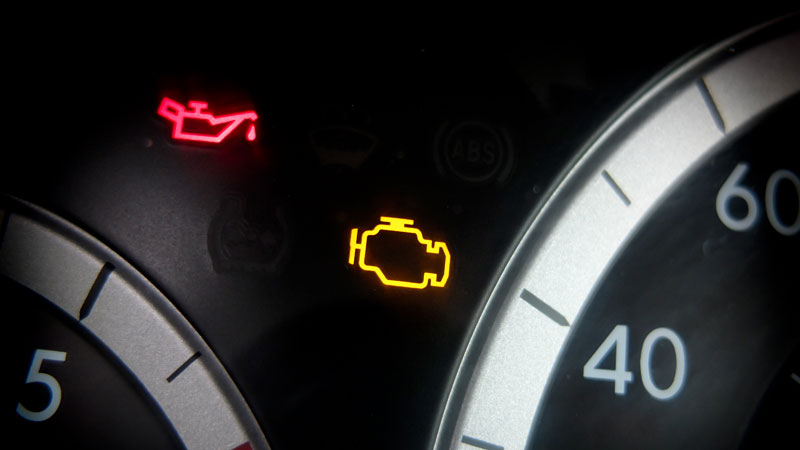
If the check engine warning light comes on, it usually means there is a problem with your transmission or engine. Once the engine control unit detects this problem, it may disable your cruise control system in response as a safety precaution.
Until you fix the engine issue, the cruise control will stay disabled.
5) Vehicle Speed Sensor
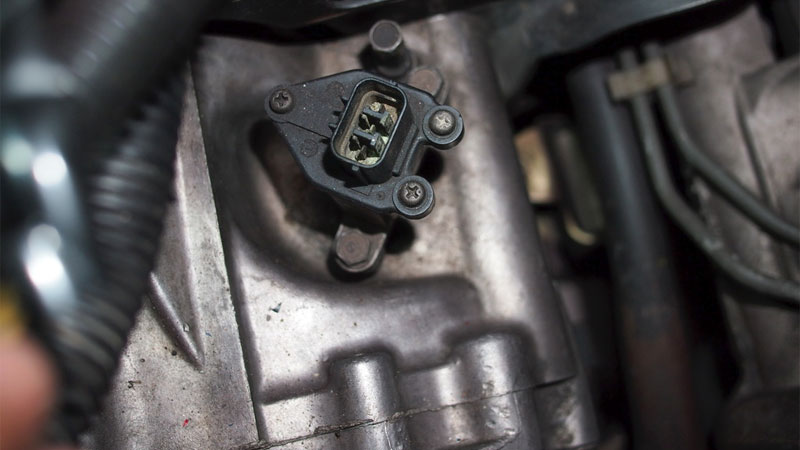
Most vehicles have a few vehicle speed sensors to transmit speed information about the vehicle to the engine control unit and the cruise control module. The only way your cruise control module is going to know how fast the vehicle is moving is if the vehicle speed sensors feed this information to it.
If the module cannot detect the speed because of faulty speed sensors, then the cruise control system will automatically deactivate.
6) Electrical Issues
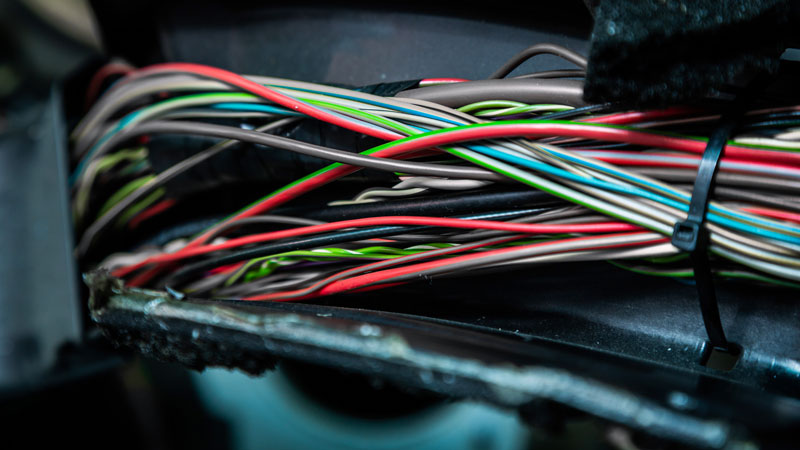
There are several electrical components connected to the cruise control system. The connectors and wiring harnesses, and ground straps are definitely components that you need to check when the cruise control stops working.
Make sure the source of the voltage is still supplying power to the system as well. If any of these components are loose or damaged, then it would explain why the cruise control isn’t functioning.
7) Loose or Broken Cruise Control Cable
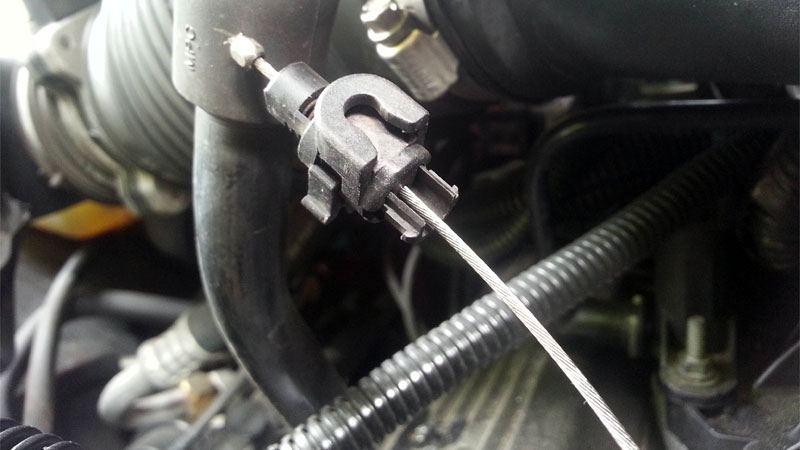
Older vehicles that are equipped with cruise control have two throttle cables – one for the gas pedal and one for the cruise control system.
These cables may stretch over time. If the cruise control cable has stretched or is broken, the cruise control system will not be able to operate the throttle plate properly.
Adaptive Cruise Control Specific Problems

Adaptive cruise control gives an extra layer of convenience while driving, as it adjusts your vehicle’s speed based on the distance to the car in front of you. However, this presents additional causes of cruise control failure.
One issue you might face is obstructed sensors. Both radar and cameras are important components of the adaptive cruise control system. When there’s dirt, debris, or ice covering these sensors, your cruise control can stop functioning. To prevent this, regularly clean your vehicle’s sensors, making sure they’re unobstructed.
Separately, failed cameras can also be a culprit. If the cameras aren’t working correctly, you may see an error warning. It’s best to get this checked by a professional to determine whether the cameras need repair or replacement. Hopefully it’s not as they are an expensive replacement.
Apart from cameras, adaptive cruise control relies heavily on radar technology for proper functioning. A misaligned or malfunctioning radar sensor can cause your system to behave irregularly. Again, consult a qualified technician to diagnose the issue and, if needed, recalibrate or replace the radar system.
Safe Driving Without Cruise Control
When cruise control systems fail, it presents challenges adjusting to speed management without the consistent pacing it provides. But there are a few things you can do.
- Focus on scanning gauges more frequently to stay actively aware of mph.
- Avoid zoning out on long hauls.
- Set phone alerts every few miles to remind checking current travel speed.
- Know highway speed limits well so mentally benchmarking against them continues subconsciously.
- Take frequent breaks stretching legs to re-energize alertness until able to diagnose cruise faults.
- Consider alternative adaptive cruise technologies equipped on newer vehicles if financially viable, providing automated incremental slowing when closing distances on lead cars.
- Remain vigilant of lead car distances and your own speed fluctuations.
- Utilize open lanes with fewer surrounding vehicles if possible, reducing needs for continual minor adjustments.
- Stay alert with renewed attention and defensive awareness absent cruise controls automated convenience until repairs are completed.
Intermittent Fault Identification
When cruise controls experience occasional yet repeating failures, meticulously logging every instance of malfunction helps uncover patterns guiding toward root causes.
Date and time each cutoff or disengagement that happens while activated. Detail any environmental or operational conditions present such as: weather, bumpy vs smooth roads, stop & go traffic versus highway speeds.
Reviewing complete repair histories alongside these event logs indicates if previously replaced components only provided temporary fixes before subsequent re-failure later on. Share documented patterns of when and how interruptions occur with shop technicians to guide their pathway tracing and component testing.
The goal is determining if specific elements like an old switch, wire insulation or solder joint chronically breaks down only under certain temperature, vibration or usage strain thresholds.
Cruise Control Repair Costs
So, your cruise control decided to take a break, and now you’re wondering how much it’ll cost to fix it. Well, repair costs vary depending on the specific issue and your vehicle’s make and model. This section will provide you with an idea of what to expect in terms of expenses.
Let’s look at the common reasons for cruise control problems and their approximate price range for replacement or repair:
- Faulty Cruise Control Switch – $100 – $200. A bit more expensive than a brake light switch.
- Blown Fuse – $5 – $30. Quick and affordable to replace.
- Faulty Brake Light Switch – $50 – $150. Can be a bit pricier but still manageable.
- Defective Speed Sensor – $100 – $300. Falls somewhere in the middle of the price spectrum.
- Throttle Control System Issues – $200 – $600. More expensive to diagnose and fix.
- ABS-related Problems – $200 – $1,000. Can also be quite costly to repair.
- Broken Vacuum Line – $50 – $150. Applicable to older systems and typically inexpensive to fix.
How Does Cruise Control Work?
If you normally drive long distances, especially on the interstate, then cruise control lets you take your foot off the gas while the car maintains the same speed, giving your leg a rest. This may seem like merely a luxurious feature rather than a necessity, but many people depend on it for safe driving.
There are several different types of cruise control systems, but all implementations share similar basic components. There is a sensor to measure vehicle speed, a throttle position sensor , and some mechanism to control the throttle plate without the use of the gas pedal.
Outputs from the speed and throttle position sensors allow the engine computer to determine how much the throttle plate needs to open or close to maintain speed.
Cruise control systems may also use sensors in the transmission, taking the current gear and engine vacuum into account. Throttle position will be different in each gear at a given speed, especially when driving over hills.
Related: How Does Drive-By-Wire Technology Work?
- Recent Posts
- Power Windows Not Working? (10 Common Causes and How to Fix) - February 8, 2024
- 14 Causes of a Car Losing Power When Accelerating - January 23, 2024
- 13 Causes of Poor Gas Mileage (Increase Your MPG) - December 13, 2023
13 thoughts on “7 Reasons Why Cruise Control is Not Working”
have a 2006 VW new Beetle my cruise works fine until i go to pass some one ,any idea what would cause it to do this? ?
When you hit the gas pedal to overtake, you might be disengaging cruise control.
i’ve heard that bad fuel can create such issue. As stated above, the Check Engine light will come on as part of the safety features to inform you something is not right. Cruise control picks up on this and shuts down.
The engine light was flashing then it stopped then started again, the cruise control is disabled but did come on a couple of times but went off when the engine needed to accelerate, the engine shakes when I. Accelerate too.
my aftermarket cruise on a 2013 Kio Rio LX wont light up
You’re going to have a hard time with finding help for that without providing the name and model of the aftermarket system. It might be best to take it to someone so they can troubleshoot in person.
My cruise indicator light will turn on but when I try to set the speed the light will shut off and not turn back on until I restart the engine. Any ideas what it might be?
Did you ever figure this one out. I got 99 Durango does this too
Cruise control goes rite into high speed when turned on,what could the problem be?
This helped me a lot. I got more out of your 6 reasons a cruise control may not work, than when I inquired about the same situation and got nothing. Thank You, Janet M.
Thanks for the feedback, Janet!
Helpful. Thank you
Mine is a mercedes benz c180, 2002 model my cruise control have just stopped working . So what are the possible causes
Leave a Comment Cancel reply
Car advice put simply.
Cruise control not working — causes and fixes
Troubleshoot and fix non-functioning cruise control in your vehicle..
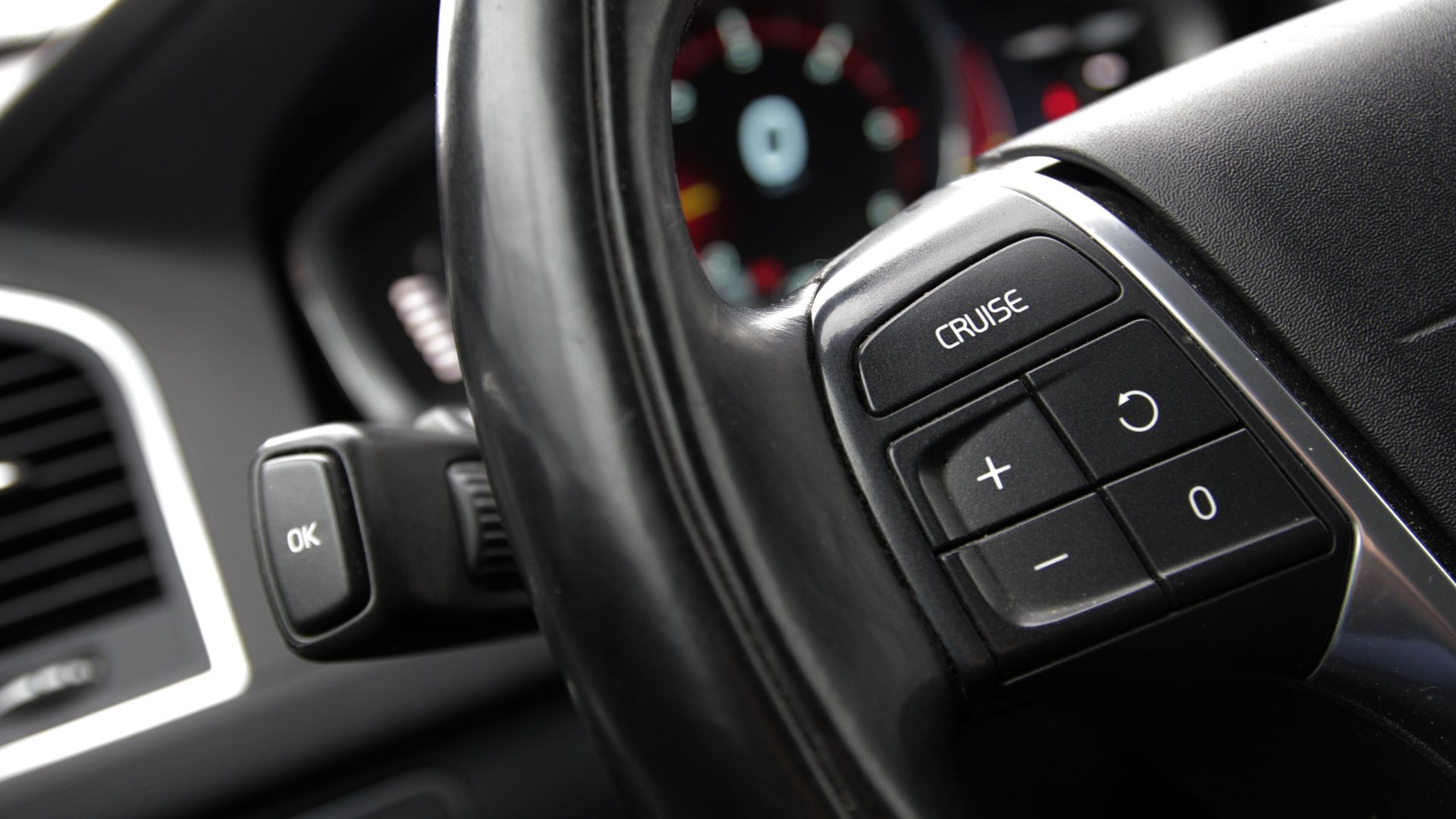
Cruise control is one of the most useful modern driving features which makes every longer journey easier. It lets you travel at a constant speed and reduces the pressure on your foot caused by frequent gas pedal pressing.
However, in case of the cruise control not working , it’s important to deal with the problem right away. If you turn the system on while it malfunctions, you might not be able to turn it off during the drive. So, you can follow this guide to get all the information about the most common reasons for failing cruise control and get advice on how to fix it.
What’s cruise control and how does it work?
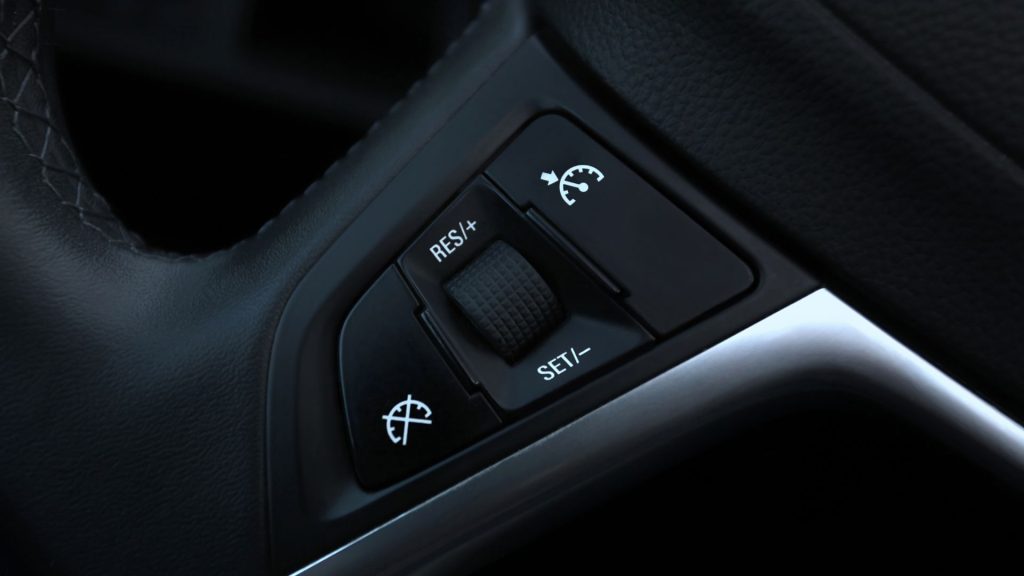
To get a better understanding of possible reasons behind malfunctioning cruise control, it’s time to deal with the basics behind the system. Cruise control is an electronic system that helps you maintain a certain speed level for extended periods without holding your foot on the gas pedal.
While driving regularly, the pressure with which you push the gas pedal is transmitted to the throttle position sensor which controls the throttle valve. If you press the pedal further down, the valve gets open, and more air flows into the engine.
On the other hand, if you apply less pressure, the valve is nearly closed, slightly letting air in. The engine control unit (ECU) uses these measurements to calculate fuel injection and translate the pressure into driving power and speed.
The modern cruise control system controls the throttle position sensor and other sensors and electronically simulates the pressure on the gas pedal. Even some older vehicles have cruise control, but in these cars, cruise control used a cable that physically maintained pressure on the accelerator.
With modern improvements, there’s also the introduction of adaptive cruise control which uses several drive assist systems to maintain your speed. These include lane assist and the possibility to increase and lower the speed by pressing the button.
Modern cruise control also measures the speed of the car in front of you in the lane to maintain a safe distance. If you are a car guy, you probably enjoy having control over the machine yourself. However, cruise control is extremely useful during a long highway ride, since it reduces the fatigue and pain of pressing hte4 accelerator for hours.
Reasons behind cruise control not working
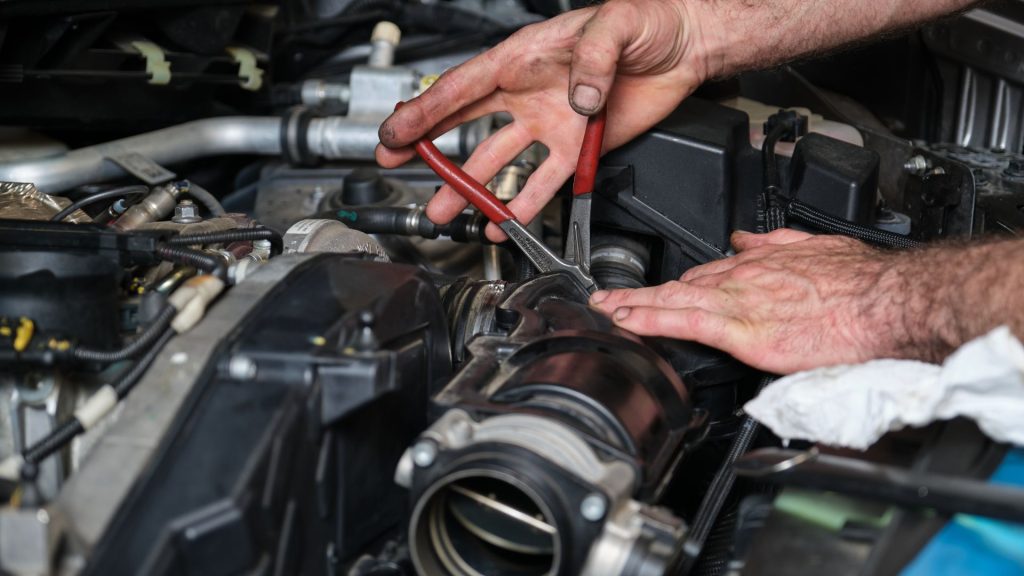
Now that you know how the cruise control system works, it’s time to dig deep into the possible reasons behind its malfunction. First, we come by electrical issues since this is an electrical feature after all. However, there are also other possible reasons, so let’s take a look at a few of the most common ones:
- Problems with the throttle body
- Malfunctioning sensors
- Blown fuse and electrical issues
- Faulty brake pedal switch
- Bad mechanical cruise control cable
All of these reasons can make your cruise control ineffective and the worst thing is if it malfunctions while you are using it. It’s also a bad thing since cruise control saves gas while on long journeys down the highway, so you’ll want to fix the problem based on the listed reasons as soon as possible.
How do throttle body issues affect cruise control?
In case the throttle body valve gets stuck, or the throttle body gets clogged, you’ll have a hard time using your cruise control system. The worst thing that could happen in this case is if the gas pedal gets stuck in position, which also affects your driving regardless of the cruise control.
You can clean your throttle body with specific products to be able to use cruise control again and to ensure proper air intake into your engine. Modern cruise control systems lock the throttle valve in a position to ensure even air intake, so if the valve malfunctions, you won’t be able to use it.
Bad or malfunctioning sensors
As mentioned, cruise control is an electrical system and it uses the readings of multiple sensors to adjust and maintain your driving speed. Out of these sensors, the throttle position sensor and the speed sensor are most relevant for the system’s operation.
We already mentioned how the throttle position sensor affects the control of the throttle valve, and the speed sensor monitors the driving speed. It sends information to the ECU regarding the traction control system by the speed readings. If the sensor fails, you’ll likely experience some strange speedometer action and an anti-lock braking system ( ABS ) warning light on the dashboard .
So, the cruise control system might also fail, as it uses the readings of these sensors as well as the data of the ECU regarding traction control and ABS usage.
Blown fuse or electrical issues
One of the easiest fixes for a bad cruise control system is to just replace a blown fuse. If this happens, you can just take a look at the fuse box by referring to the owner’s manual of your vehicle for the exact location. Usually, there’s a fuse box under the hood or just the left of the steering wheel in the car’s interior.
If there’s a circuit short, the fuse might blow, and simply replacing it will bring the system back on again. Also, other electrical issues can occur such as a bad connection with the control buttons on the steering wheel or electrical connections
Bad brake pedal switch
The cruise control system in your car is connected to the brake pedal switch. It’s the switch that communicates with your tail lights and turns them on as you press the brake pedal. If the switch goes bad, the signal gets interrupted, and it can reflect on your cruise control system as well.
Most cruise control systems are designed to disengage as you press the brake. So, if the computer believes the brakes are pressed due to a faulty switch, it will turn off the cruise control system.
Worn mechanical cable for older cruise control systems
As mentioned, old cars with cruise control often use a cable that locks the accelerator in place as you activate the system. This ensures that the accelerator pressure stays the same during the time the system is active.
The mechanical system also uses an actuator and hoses, and these could all wear off due to frequent usage. So, if any of the mechanical components malfunction, you won’t be able to use the cruise control system.
Fixing a failed cruise control system
If your cruise control system works on some occasions, while it fails on others, don’t use it while driving. It’s not safe and the best thing you can do is inspect the system based on the reasons behind a malfunctioning cruise control.
You can do some repairs yourself, including testing and replacing a blown fuse. On the other hand, you’ll need the help of the mechanic to replace a bad actuator in mechanical systems or to fix the brake pedal switch.
Overall, if you spot your cruise control not working, you shouldn’t use it while driving until you make the repairs. Some systems will fail on some occasions, while you’ll sometimes be able to use them regularly. It’s still better to inspect the system based on the common reasons behind its failure listed in this guide and make proper repairs.
This way, you can save yourself some trouble, along with gas and effort while driving with the cruise control system active.
What could cause the cruise control to stop working?
A blown fuse or a faulty brake pedal switch could cause the cruise control to stop working, along with malfunctioning sensors.
How do I know if my cruise control fuse is blown?
You can know if your cruise control fuse is blown by taking a look at the fuse box, and you can find the fuse box location in the owner’s manual.
Where is the fuse for the cruise control?
The fuse for cruise control is located within the fuse box under the hood or at the left of the steering wheel.
How much money does it cost to fix cruise control?
It costs anywhere from $10 for a replacement fuse, to $500 for the actuator or the throttle body repair to fix the cruise control system.

Filip is a lifelong car enthusiast with over 3 years of experience writing about cars and had worked as a mechanic apprentice for over 5 years, gaining hands-on expertise in automotive mechanics. At REREV, he combines his passion for cars with his comprehensive knowledge to provide readers with a unique blend of technical insight and engaging storytelling that sets the bar high for automotive content.
- Editorial Guidelines
Car Insights
- Years to avoid
- Collections

Cruise Control not Working (Diagnosis and Troubleshooting)
What makes cruise control not work.
Bad brake pedal/light switch — This means communication between you, cruise control and the car is interrupted, and you can’t have immediate manual control of the car.
Bad fuse — Fuses blow to protect the electrical system. Cruise control fuses will do the same, to protect the system and circuits in your car the fuse will break and then need repairing.
Failing speed sensor — Speed sensors are important in cruise control because your car needs to remain at the same speed consistently. Broken speed sensors will affect more than cruise control and need to be serviced urgently
Bad actuator vacuum, hose, or cable –The actuator vacuum is what connects and activates the throttle control. The fault may be with the hoses in the vacuum actuator or the cable linking the system together.
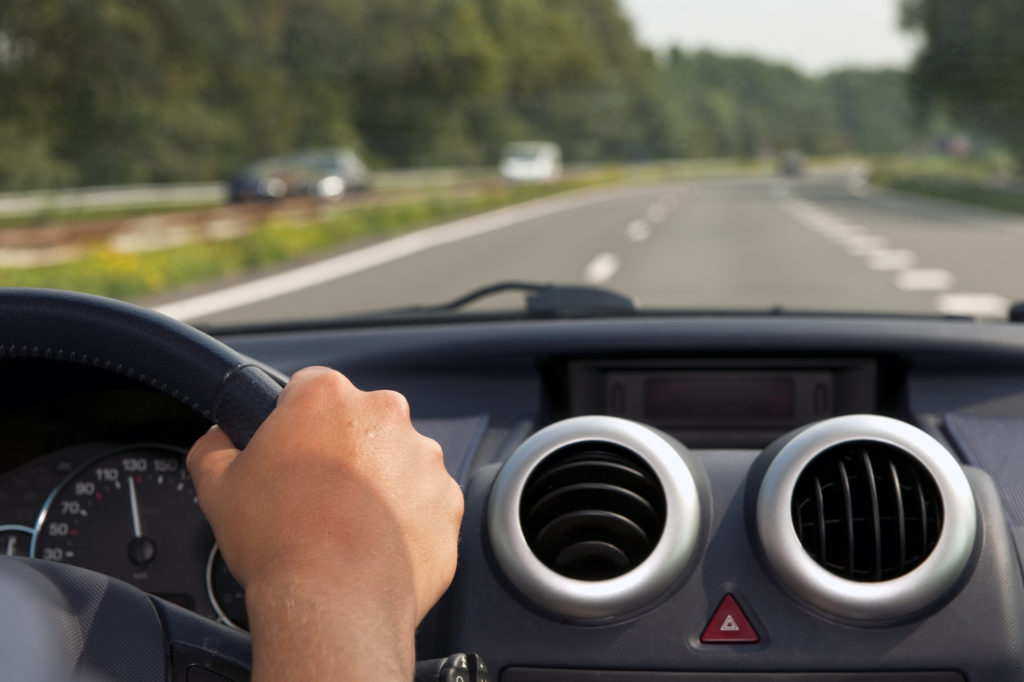
Symptoms of bad cruise control switch
- Symptom 1 — brake pedal does not disengage cruise control
There’s a switch fixed to the bases of the brake pedal and if cruise control does not deactivate when braking then it’s a sign that this switch is faulty.
- Symptom 2 — Hissing noises are heard from under the dash.
The cruise control switch is a vacuum system and for some vehicles, it is mounted near the brake pedals under the dash. If you can hear hissing, it could indicate that the switch or one of the switch’s vacuum hoses is broken.
- Symptom 3 — The cruise control switch/button itself does not work
When trying to turn on the function or while cruising it turns off, this is an indicator of a faulty switch and can be related to wiring issues or the above (1-2) symptoms
- Symptom 4 — A blown fuse
A blown fuse could be a simple error and fix. The switch circuit or fuse may just need to be replaced for the problem to resolve.
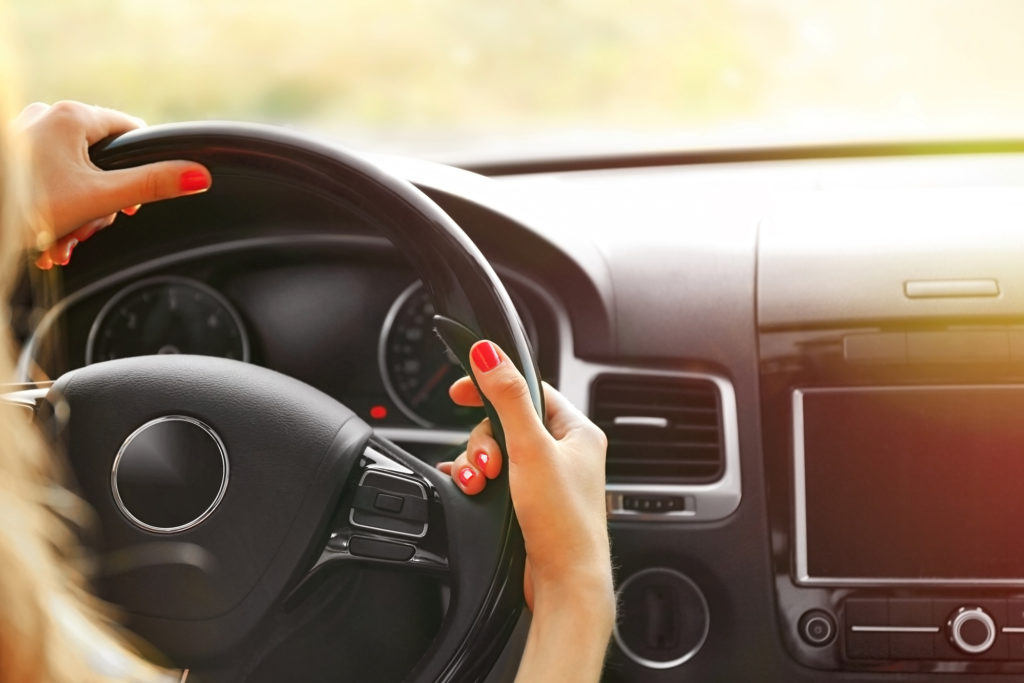
Possible Cruise control failure Scenarios
1. Cruise control not working after battery change
- Possible cause — This differs from vehicle to vehicle and among brands. Some drivers’ cruise control malfunctions after jump-starting their battery, and this is because the battery is still discharged. Newer cars have many electronic systems, and most are powered by the battery. So, if the battery is discharged or low-powered, the electrical cruise control system can be affected.
- Solution — Putting your battery on a trickle charger (2-5 amp) for 12 hours or driving on cruise for a couple of hours may resolve this issue.
2. Cruise control turns off while driving
- Possible cause — Damaged speed sensor or actuator, these two could be internally malfunctioning and causing the cruise control to disengage without input from you.
- Solution — Have a technician or mechanic run a diagnostic with the speed sensor and check the actuator hoses and cables.
3. Cruise control works intermittently
- Possible cause — this may relate to the brake pedal switch. If cruise control is intermittently disengaging, it could be a wiring issue with the switch.
- Solution — Have the brake pedal to cruise control switch investigated by a mechanic or technician and determine if there is a faulty wire to blame. You may need to have the switch or some of its parts replaced.
4. Cruise control turns on but will not set
- Possible cause — The brake pedal switch may be the issue. The brake pedal deactivates cruise control and if it is stuck in the open position, it may cause the cruise control to not engage or set properly.
- Solution — Ask your mechanic or technician to check for this issue specifically in their diagnostic and service.
5. Cruise control turns on by itself
- Possible cause — There may be a failure with the Electronic Control Module (ECM) which manages the actuators or Electronic Control Unit (ECU) which controls the speed in your cruise control
- Solution — You could attempt to reprogram the ECU and ECM if you have the computer tools, otherwise take it into a trusted mechanic or technician.
There are many helpful forums run by mechanics and amateurs: These are always great for solving those specific problems you might experience.
When CC does not set: https://mechanics.stackexchange.com/questions/34795/cruise-control-will-not-turn-on-cannot-be-enabled-nor-set
When CC is faulty after battery change: https://www.vwvortex.com/threads/help-cruise-control-not-working-after-dead-battery.4464553/
For cruise control and other general repairs, watch this channel: https://www.youtube.com/channel/UCf2f4MeZzSksVMe1z3Lp3hw
Can cruise control cause check engine light?
When the check engine light or MIL (Malfunction Indicator Light) is on, the cruise control light may blink to signal that cruise control has been disabled. This is a safety control as the vehicle is programmed to not go on ‘autopilot’ should the engine or mechanical issue relate to the cruise control systems. If the error or fault is with the cruise control systems, then the MIL may be lit for that as well.
How much does it cost to fix cruise control malfunctions?
- For switch repair (parts and labour) it’s estimated at $125- $350
- For fuse repairs, it could be up to $10 to buy the fuse and replace it yourself in a few minutes — there are many helpful YouTube tutorials on simple car repairs like this one.
- For actuator repairs, some cost more than $700
- Therefore, it’s important to know WHAT the issue is to get an idea of HOW MUCH it will cost you.
Does cruise control malfunction trigger the check engine light?
The function of a check engine light or MIL (Malfunction Indicator Light) is to communicate engine or mechanical failures in your vehicle to prevent an accident on the road. The MIL can be lit for simple reasons like the gas cap is loose. Should your CC system fail or run incorrectly, the MIL could light up. Often when there are other failures or engine faults, the MIL will light and the cruise control with a flicker to signal it has been disabled for safety reasons. Once the cruise control or other issues are fixed, all the lights should go back to being turned off.

Author: Dave Johnston
Related articles.
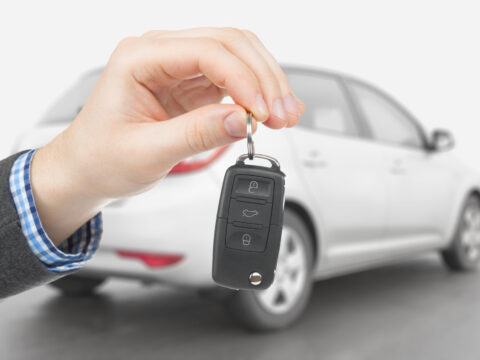
Leave a Reply Cancel reply
Your email address will not be published. Required fields are marked *
Save my name, email, and website in this browser for the next time I comment.
Recent Posts

MyCarMakesNoise.com
Copyright © 2024 My Car Makes Noise

CarParts.com will be back soon!
We apologize for the inconvenience. The CP Team is working on some upgrades to improve our service. Thank you for using CarParts.com!
You can call us at
1-866-529-0412
Reference ID: 18.6fc733e.1712221939.39ccf18
Fixing Faulty Cruise Control
Alarmingly, the speedometer needle steadily winds down from 75 mph toward 50. Just as you uncurl your feet and try to accelerate back to traffic speeds, the vehicle downshifts with a lurch and abruptly climbs back to over 80 mph. So you tap the brakes and disengage the cruise control to avoid a conversation with one of the many law enforcement officers lurking behind every other billboard. Toggling the Resume switch settles things down, holding to a legal speed on both the uphill and downhill sections of the interstate. The kids in the back seat have stopped threatening to throw up, too. Then you look in your mirror 20 miles later and see the lights. Red and blue flashing lights. You're doing over 85 mph and, odds are, Smokey isn't going to believe you have the cruise set to 70. Time to find out why your cruise control has a mind of its own.
IT'S NOT A BUG, IT'S A FEATURE Does your cruise control fall out of engagement partway up steep hills? Actually, it will normally drop out if the engine has to work too hard, mainly because after a while there isn't enough vacuum left to pull in the servo after sustained near-wide-open-throttle. You'll just have to put your foot into it. Downshifting helps.
Does your Japanese car not remember the set speed after tollbooths? Unlike most American and European cars, some Toyotas and Hondas are designed not to remember their set speed if the vehicle speed falls below 25 mph, and you're supposed to accelerate the vehicle to your set speed and hit the Set button again. Annoying, but that's the way they were designed.
Do you have to ride the brakes on longer downhills to keep from building up excess speed? That's normal too. The cruise control only has authority to reduce engine speed to idle. It doesn't activate the brakes. Modern cars, in an attempt to improve mileage, have very tall gear ratios, low-friction engine designs, low-rolling-resistance tires and optimized aerodynamics. That long downgrade outside of town may have accelerated your '60s-era Pontiac to only a couple of miles per hour above legal. But, it may well propel your new economy car to blatantly illegal velocities unless you intervene by braking or downshifting.

WHAT'S THAT HISS?: Most common cause of erratic cruise control? Vacuum leaks caused by deteriorated hoses.
SMOOTH AND STEADY Cruise control on your vehicle is a terrific device. It substantially reduces the driver's workload on longer trips, and can save substantial amounts of fuel and expense over the life of the vehicle--until it stops working.
We'll get to the scenario of not holding a steady speed later, but here are a couple of things to check immediately if the cruise control is on strike.
Does the Cruise icon on the dash light up when you turn the switch on? Duh. Check the fuse. You may need to look in the owner's manual to see which one if it's not tagged on the fuse box cover. An aftermarket cruise may have an inline fuse holder in the wiring to the controller.
If there is power to the system, the next check is the brake lights. Brake lights? Yup, cruise controls have a switch to toggle them off when you touch the brake pedal, and many use the same switch as the brake lights. If one of the brake lights has failed, the cruise control thinks the brakes are on all the time and won't come on. Same result if the switch is incorrectly adjusted or broken or jammed. Wait, there's more--if your vehicle has a manual transmission, there's a similar switch on the clutch pedal. You may need to break out a test light or multimeter to verify the function of this array of switches. These switches usually are normally closed switches, and close their contacts when the pedal is depressed. We've seen several cases of intermittent cruise control dropout caused by a brake light switch that was adjusted very tight. Any small bump would jiggle the brake pedal down far enough to toggle the brake lights on for a brief instant--long enough to shut down the cruise. Adjusting the switch to specs (usually so the brake lights come on after the pedal travels 1/2 in.) fixed it.
Once you verify all of these things, it's time to look for more subtle causes. Check underhood. Inspect the linkage between the cruise control actuator and the throttle. It may be as simple as a toilet-tank bead chain or a separate throttle cable with its own actuator cam to the throttle body. Look for disconnected or damaged wiring to the controller or actuator, particu-larly if it's an aftermarket system, which may have been installed by someone with poor mechanical skills.
Another obvious failure point is the vacuum line to the actuator. If it has fallen off, there's no vacuum to the actuator and no force can be applied to the throttle. We'll get ahead of ourselves here and mention that a vacuum line that looks fine may have a subtle leak caused by aging, brittle rubber or connections that don't seal well. A lot of the cruise controls we've seen with issues in regulating their speed correctly are fixed by simply replacing all the vacuum lines between the servo, vacuum reservoir (if there is one) and the intake manifold vacuum supply.
WHOA, NELLIE!: If your brake light switch is incorrectly adjusted, your cruise control may not lock in. A burned-out brake light can do the same.
WHAT'S THIS THING?: The cruise control servo motor could be anywhere in the engine compartment.
CONTROL ISSUE WITH YOUR SERVO There are two main components of the cruise control system: the controller and the servo.
The controller integrates all the inputs and tells the servo how far to actuate the throttle plates. Normally, there is no way you can service this item, so if you trace a problem to the controller, you'll have to buy a new one. A bad controller probably will require a service manual for specific diagnostics. You'll also need a scan tool to access any computer trouble codes to boot.
The servo does the work of moving the throttle blades to speed up the vehicle. Conventional systems are actuated by manifold vacuum. Check the linkage from the servo to the throttle to ensure it's properly hooked up and not binding or sticky. Inside the servo is a diaphragm that moves to pull on the linkage. Some older systems, used on cars or trucks that don't have throttle-position sensors, may have a rod that moves in and out of a magnetic coil to tell the controller the throttle position. There are also two electrically operated solenoid valves. One valve admits vacuum to the diaphragm chamber to add more throttle. The other bleeds air back into the chamber to reduce throttle. Normally, they will never be open at the same time, so if one is sticky or leaking, cruise control operation will be erratic at best. Check for leakage with a handheld vacuum pump. A leaky valve may benefit from a quick shot of silicone spray.
Diesels and some late models may use a servo that is completely electrical. These usually are mounted on the fenderwell or firewall, and are connected to the throttle by a second throttle cable. Other than keeping the cable lubricated and properly adjusted, there's not much to fiddle with. As always, check the shop manual for specifics on your vehicle.
Many late-model cars have throttle plates connected directly to an actuator controlled by the engine management computer. There is no physical connection between your right foot and the throttle blades (Scary, eh?), and there may or may not be a separate cruise control servo or controller.
HOW FAST WAS I GOING, OFFICER? If you still have no engagement, there may be an issue with the cruise control's speed input. Modern cars use information from the ABS's vehicle speed sensor (VSS) because the engine-management computer needs to know road speed. If your Check Engine light is on, the cruise may not work, especially if the VSS is malfunctioning. Older vehicles may use speed information from the speedometer. Aftermarket systems may resort to a ring of magnets clamped to a driveshaft or axle shaft, with a magnetic coil positioned nearby. If the magnets have fallen off or the coil has been smashed by a rock or road debris, there's no speed data for the controller.
URBAN LEGEND The legend has been related to us by all manner of people, including a couple of state police officers. Using the cruise control in rainy or slick conditions will make your car speed up uncontrollably, until you lose control and crash. It's a myth. Engaging the cruise will not make the car speed up. The cruise will attempt to maintain a steady speed. If the wheels lose traction and the car starts to slow down, the cruise will speed up the engine to attempt to accelerate back to the set speed. This will make the drivewheels spin more briskly. The vehicle speed will go slower, regardless of how furiously the wheels spin. If you have a rear-wheel-drive car, the effect is to destabilize the vehicle, and you probably will spin out unless the vehicle regains traction in a reasonable length of time. A front-wheel-drive car with spinning tires will attempt to continue in a more or less straight line--which will make steering control dodgy at best.
Heavy rain or snow makes use of the cruise control inadvisable, but such conditions certainly won't make your car accelerate to ludicrous speeds while you hang on for dear life. If the cruise is engaged and you perceive a loss of traction, the best bet is to tap the brake to disengage the system, and then add just enough throttle to maintain steering until the vehicle slows down to a more appropriate speed.
WHERE'S THIS THING?: Speed sensor may be buried under the dash near speedo head.
SUCK IT UP: The vacuum reservoir provides an added source of vacuum for those long uphill grades.

.css-cuqpxl:before{padding-right:0.3125rem;content:'//';display:inline;} Cars .css-xtujxj:before{padding-left:0.3125rem;content:'//';display:inline;}

The 5 Best Cordless Power Washers

The 2024 Nissan Rogue Is Making Its Great Escape

Future Cars Worth Waiting For: 2024–2028

10 of the Greatest Corvettes of All Time

The 8 Best USB Car Chargers for a Full Battery

Our Top Tested Jump Starter is 41% Off At Amazon
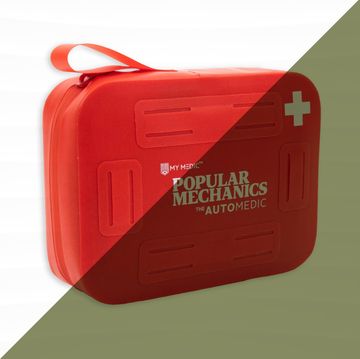
The Best Car Emergency Kits, Just in Case

These Jeep x Igloo Accessories Are Awesome
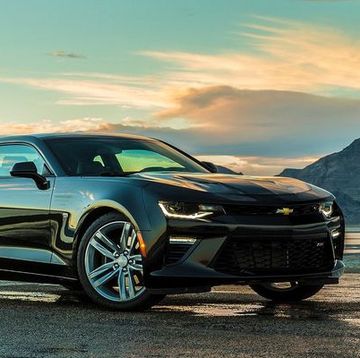
20 Cars That Were Massively Improved by a Redesign
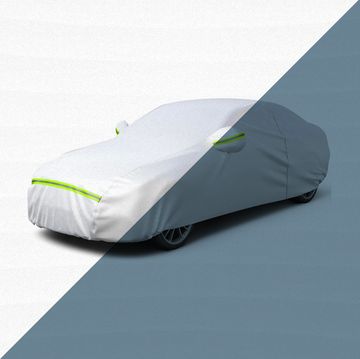
The 8 Best Car Covers for Protecting Your Vehicle
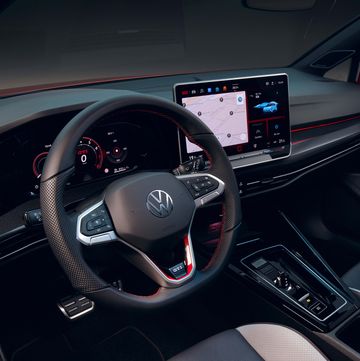
Volkswagen ID.4, Updated Golf Will Feature ChatGPT
Truck of Mine
reliving the truck passion

Ford Cruise Control Troubleshooting & How-to Guide
Ford’s adaptive cruise control is a game-changer when it comes to safe driving. Not only does it help to maintain the approved safe distance from other cars, but it also helps you control your speed when on busy roads or the highways. This gives you a better driving experience overall and decreases your chances of getting into an accident.
How to activate cruise control on a Ford
- Press the ON/OFF button on the steering wheel.
- Then cruise to the speed you wish to be at and Press SET.
- Take your foot off the accelerator and press the car icon on the steering wheel to set the minimum desired gap.
Note: There are four different gap options from close to further away. The more lines on the screen, the further the distance.
- When the cruise control is active, green light with a clock, car, and arrow will appear on the dash.

How to use Ford cruise control with a start and stop
The adaptive cruise control makes driving easier because it eliminates the need to readjust cruise control speed constantly. It uses an intuitive system that automatically adjusts speed to maintain a set distance from slower-moving vehicles ahead. When traffic speed increases, the cruise control system resumes the designated speed.
Press the up and down arrows on your steering wheel cruise control switch to set a gap distance. Use the short, solid arrow above to decrease the following distance. Use the longer arrow below to increase the following distance.
You can cancel at any time by hitting the brake or pressing the cancel button on the steering wheel. They will then return the vehicle to its previously set speed and gap settings when pressing the Resume button.
Note: There are four gap distance settings. One bar indicates the shortest following distance available, while four bars indicates the longest distance.
How to Switch between Normal and Adaptive Cruise Control
- Use the arrow pad on your steering wheel to select “Driver Assist” on your vehicle’s information display.
- Select Cruise Control> Adaptive to enable Adaptive Cruise Control.
- Select Cruise Control> Normal to return to conventional cruise control.
How to deactivate Ford cruise control
Press the brake pedal or cancel on the steering wheel. Refer to the manual to locate the cruise control ON/OFF button.
What Ford models have adaptive cruise control?
Not all Ford vehicles come equipped with the Adaptive Cruise Control features. Additionally, the feature may have varying capabilities on different car models. Below is a list of Ford car models the have the cruise control either as a standard feature or an optional feature;
- Transit Connect
- F-150 Raptor
- F-250, F-350, F-450
How to safely test Ford cruise control
Press the cruise OFF button and hold it down. Then cycle the ignition key from RUN to OFF to RUN quickly without starting the engine. The cruise control indicator light will flash once to indicate that you have successfully entered the test mode.
Ford cruise control troubleshooting
The cruise control module can malfunction from time to time. When this happens, you should determine the issue before trying to fix it. This will enable you to figure out if the problem is as simple or a fuse or a vacuum leak.
Follow these steps to troubleshoot the cruise control;
Start by opening the fuse panel under the steering wheel. Pull up on the fuse panel release lever and then pull the fuse panel down.
Then check the brake lights and cruise control fuses. You can refer to the diagram on the fuse panel cover to locate these fuses. The cruise control system will not work if the cruise control module fuse is burnt or damaged. And the brake lights won’t work if the brake’s fuse is damaged.
Start the vehicle and monitor the vacuum lines on the intake and brake booster to check for a vacuum leak. This air leak will cause the cruise control system to malfunction as the cruise control will not control the vehicle speed efficiently. Also, check for a rough idle and a “sucking” sound coming from the engine bay while running. This is also an indication of a vacuum leak.
Then check to see if the throttle cable is damaged or frayed as this may also prevent the cruise control from working efficiently when controlling the throttle.
Finally, shut off the vehicle and disconnect the negative battery cable. Then loosen the retaining nut on the negative battery cable and slide the cable off the cable clamp. Remove the steering wheel column cover in place and pull the cover off the steering column with your fingers.
Unplug the electrical plug from the cruise control switch. And remove the screws holding the cruise control stalk to the steering column. Inspect the cruise control module and combination stalk. You use a working stalk to determine if the cruise control module or existing stalk is damaged.
Symptoms of a bad cruise control switch
This is the switch that controls various functions of the cruise control system. The switch is mounted on the steering wheel, and it houses all the other cruise control’s controls. When this switch is damaged, it may prevent the proper functioning of the cruise control. Here are the signs of a failing cruise control switch.
The cruise control light doesn’t illuminate
The light should light up immediately after activating the system to let the driver know that the cruise control system has been activated. If the light does not turn on, then the LED indicator controller may be damaged.
The vehicle cannot maintain set speed or acceleration
Irregular speed acceleration is a sign of a failing cruise control switch. The system is designed to control the vehicles speed at a predetermined speed. Lack of speed maintenance or speed acceleration beyond the set speed is a sign of a damaged cruise control switch.
Note: if your cruise control switch is damaged, have a trained professional fix or replace it. Running a self-diagnostic and fixing the switch may void the warranty. You may also end up damaging other components of the cruise control system.
Check this too: Popular 2017 Ford Escape Problems To Look Out For
Ford adaptive cruise control problems and their fixes
Here are some common cruise control issues and the most probable fixes when your vehicle is experiencing cruise control problems.
Issue: Your truck’s cruise control isn’t working at all
- Check the fuse, horn relay fuse, and cigarette lighter fuse to ensure they are not damaged.
- Inspect the throttle actuator cable to see if it is broken or disconnected from the throttle.
- Check the brake light bulbs to ensure they are not burnt out.
Issue: The cruise control won’t disengage when the pedal is pushed
Fix: Check the brake light switch, fuse, and wiring.
Issue: Some switches work, and some don’t
Fix: Check the switches. They are the most likely culprit and need to be replaced.
Issue: The cruise control system loses speed up long or steep hills
- Turn off overdrive when going on up steep hills. It may help.
- Check the vacuum check valve in the Servo feed line if your truck loses speed on smaller hills.
- Check the vacuum reservoir tank for leaks.
Reasons Why the Cruise Control is Not Working
If your cruise control is not working, you can look at several items to verify the problem. This, in turn, makes it easy to repair. Below are the main reasons why your cruise control is not working;
Brake Light Switch – The cruise control system is automatically cancelled by depressing the brake. Some Ford vehicles can disengage cruise control if the brake light switch cannot be detected.
Brake Lights – The cruise control is designed to become disabled when the brake light is blown.
Fuses and Relays – A blown fuse or damaged relay will affect the cruise control.
Spiral Cable –A faulty spiral cable will prevent the switch from contacting the CCM.
Control Switch – If the internal contacts wear out, the cruise control switch may not contact the CCM. This might disable cruise control altogether, or it might not react to the cancel or accelerate functions.
Check Engine Light – This is an indicator of a failing engine or fuel pump, which may, in turn, affect acceleration while cruising.
Vacuum Leak – A vacuum leak may affect the vehicle’s ability to control the throttle body during cruise control operation. If there is a leak due to a cracked hose or tube, the cruise control system will not work.
Vehicle Speed Sensor – Ford vehicles are fitted with multiple vehicle speed sensors (VSS). The CCM might use a VSS feed from the ECM, instrument cluster, or transmission. If a speed sensor is damaged, the CCM can’t detect vehicle speed, thereby disabling the cruise control system.
Electrical Problems – Check for continuity to ensure power is remitted as it should.
Note: do not under any circumstance if it is faulty. If the cruise control system is defective, it may not cancel on demand, which will create a safety hazard for you or others on the road. Additionally, hire a trusted mechanic to carry out the diagnosis and repair of the cruise control system.
How do I know if my cruise control module is bad?
The most common sign is the inability to use it to activate cruise control. It may also fail to perform various adaptive cruise control functionalities such as distance and speed maintenance. The failure to deactivate cruise control is also a sign of a failing cruise control module.
Is it expensive to fix cruise control?
On average, it will cost you between $150 and $350 to repair the adaptive cruise control. This depends on the parts needed and the labour costs. The car model also affects the sot of the components required to fix your cruise control. The price may also vary depending on your location. Anticipate a higher price markup if you live in a big city.

When and How Should You Turn OFF Cruise Control? A Guide to Safe Usage

A Quick Overview
Picture yourself cruising down the open road, enjoying the scenery and feeling the wind in your hair. You’ve engaged cruise control so you can sit back and relax while your car maintains a steady speed. It’s convenient, it’s easy - but is it always safe? As with any technology, there are both benefits and risks to using cruise control on your vehicle. In this guide, we’ll explore when and how to turn off cruise control for maximum safety on the road. Whether you’re a seasoned driver or just starting out behind the wheel, read on to discover everything you need to know about this popular feature!
What is Cruise Control and How Does it Work
Cruise control is a feature found in many modern vehicles that allows drivers to set a constant speed for their car without having to maintain pressure on the accelerator pedal. It’s often used on long stretches of highway driving, where maintaining a consistent speed can help reduce driver fatigue and increase fuel efficiency.
There are two main types of cruise control: traditional and adaptive. Traditional cruise control maintains a constant speed regardless of any changes in road conditions or traffic flow, while adaptive cruise control uses radar or other sensors to adjust the vehicle’s speed based on its surroundings.
To engage cruise control, the driver usually presses a button or switch located on the steering wheel or dashboard. The system then takes over throttle operation and maintains the desired speed until it’s turned off manually by the driver (or automatically if certain conditions are met).
While cruise control can be useful in many situations, it’s important for drivers to understand how it works and when it should - and shouldn’t - be used for maximum safety on the road.
Advantages and Disadvantages of Using Cruise Control
Using cruise control has both advantages and disadvantages. On one hand, it can help you maintain a steady speed on the highway without having to constantly adjust your foot on the gas pedal. This can lead to improved fuel efficiency and less fatigue for the driver over long distances.
However, there are also some potential downsides to using cruise control. For example, if you become too reliant on it, you may not be as alert or engaged behind the wheel as you should be. Additionally, in certain situations such as heavy traffic or inclement weather conditions, it’s often better to have more direct control over your vehicle’s speed rather than relying on an automated system.
Whether or not you choose to use cruise control is a personal decision that depends on factors like driving conditions and individual preferences. It’s important to weigh both the pros and cons before making a choice so that you can stay safe and comfortable while behind the wheel.
When to Use Cruise Control:Best Practices
Cruise control is a great feature that can make long drives much easier and more comfortable. But when exactly should you use it? Here are some best practices for using cruise control:
Always be aware of your surroundings before turning on cruise control. It’s important to only use it in appropriate situations where there is little traffic and the road conditions are good.
Consider your speed when using cruise control. It works best at higher speeds on highways or freeways with minimal curves or turns.
Avoid using cruise control in wet or slippery conditions, such as rain or snow. This will help prevent accidents caused by hydroplaning or skidding.
Fourthly, remember that even with cruise control engaged, you still need to remain alert and attentive behind the wheel. Don’t let yourself become complacent just because the car is doing most of the work for you.
If you’re driving on hilly terrain with frequent changes in elevation, it may be better to turn off cruise control altogether to maintain greater control over your vehicle’s speed.
By following these best practices for using cruise control, you can enjoy a safer and more relaxed driving experience while also conserving fuel and reducing stress on your body during long trips.
Safe and Efficient Operation of Cruise Control
To safely and efficiently use cruise control, you must understand its limitations and benefits. Before engaging the system, make sure your car is in good working condition, particularly the brakes.
When using cruise control, maintain a safe distance from other cars on the road. This will give you enough time to react if you need to brake suddenly or change lanes. Avoid using it in heavy traffic or when driving on winding roads where there are many curves.
Aim for a steady speed when cruising by gently accelerating and decelerating as necessary with minimal braking. This reduces fuel consumption while ensuring smooth operation of your vehicle. In addition, avoid using cruise control on slippery surfaces such as ice or wet roads.
Always stay alert even when using this feature because it does not replace human judgment and reaction time altogether. Keep both hands on the wheel and be prepared to take over at any moment should anything go wrong.
Never rely too heavily on technology; remember that safety always comes first regardless of whether you’re driving with or without cruise control engaged.
How to Turn Off Cruise Control Step by Step Guide
When you’re driving on a long stretch of highway, it’s easy to get comfortable with cruise control. However, there may be times when you need to turn off your car’s cruise control quickly and safely.
The first step in turning off your cruise control is to identify the button or lever that controls it. In most cases, this will be located somewhere near the steering wheel or dashboard.
Once you have located the cruise control button or lever, pressing it once should deactivate the feature entirely. In some vehicles, however, you may need to hold down the button for a few seconds before it turns off completely.
If your vehicle has adaptive cruise control (ACC), which automatically adjusts speed based on traffic flow ahead of you, there may be an additional step involved in deactivating this feature. Check your owner’s manual for specific instructions related to ACC systems.
Remember that if you are traveling at high speeds when turning off cruise control, your vehicle will naturally begin to slow down as soon as the system is deactivated. Be sure to maintain proper speed and focus on navigating any upcoming curves or hazards on the road ahead.
Knowing how to turn off your car’s cruise control can help keep you safe while driving. Always consult your owner’s manual for specific instructions related to your particular make and model of vehicle.
When Not to Use Cruise Control:Risks and Precautions
While there are many benefits to using cruise control, there are certain situations where it’s best to refrain from using it. One of the biggest risks of using cruise control is when driving in adverse weather conditions such as rain, snow or ice. In these conditions, the road surface can become slippery and unpredictable which can cause your vehicle to lose traction.
Another situation where you should avoid using cruise control is when driving on steep terrain or winding roads. Cruise control was designed for use on flat highways with little traffic and few obstacles, so its use on hilly or winding roads could lead to accidents.
It’s also important not to rely too heavily on your car’s technology. Even though modern cars come equipped with advanced safety features like lane departure warnings and blind spot monitoring systems that can help prevent accidents, they’re only meant to assist you while driving.
Moreover, if you notice any issues with your car’s cruise control system while driving such as sudden acceleration or deceleration beyond what you’ve set manually then immediately turn off the system and bring your car for inspection by a professional mechanic.
Knowing when not to use cruise control is just as important as knowing when it’s appropriate. By understanding the limitations of this feature and taking proper precautions before hitting the road will ensure a safe journey every time!
How to Deal with Malfunctioning Cruise Control
One of the risks associated with using cruise control is malfunctioning. While rare, it can happen and may lead to accidents if not properly addressed. If you experience a malfunction while driving, remain calm and follow these steps.
Turn off your cruise control immediately by pressing the brake pedal or turning off the switch on your steering wheel. This will disengage the system and prevent further acceleration.
Next, check for any visible signs of damage such as loose wires or connections. If you are unable to identify any issues yourself, seek professional help from a mechanic or technician.
It’s important to note that continuing to use cruise control when experiencing malfunctions can be dangerous and should always be avoided. It’s better to be safe than sorry in this situation.
Before hitting the road again after resolving the issue, test your vehicle’s cruise control at low speeds first to ensure that everything is functioning correctly once more.
By being prepared for potential malfunctions with your vehicle’s cruise control system and taking prompt action when required, you can minimize risks on the road and reach your destination safely.
Can You Use Cruise Control in Rain? Safety Tips and Best Practices
When it comes to using cruise control, there are certain situations where you need to be extra cautious. One of those scenarios is driving in the rain. While it may seem like a convenient feature to use during wet weather, there are some important safety tips and best practices that should be followed.
First and foremost, it is essential to reduce your speed when driving in the rain. Wet roads can greatly decrease traction and increase stopping distances, so slowing down will give you more time to react if something unexpected happens.
Another important tip for using cruise control in the rain is paying close attention to your surroundings. Keep an eye out for any hazards on the road such as standing water or debris that could cause skidding or hydroplaning.
Additionally, avoid sudden movements while using cruise control in rainy conditions. Abrupt acceleration or braking can cause loss of traction which could lead to accidents.
It’s also worth noting that some vehicles have automatic emergency braking systems that don’t function properly when cruise control is activated during bad weather conditions; thus manual operation might be safer than relying on automated features alone.
While it may seem tempting to use cruise control while driving in the rain, following these safety tips will help keep drivers safe on slick roads.
👉 You may also like - Understanding the Cruise Control Symbol on Your Car Dashboard. Decoding Standard Symbols
When should you turn off cruise control?
You should turn off cruise control in situations that require increased focus and control, such as in heavy traffic, inclement weather, and on twisty roads. You should also turn it off when descending hills or in any situation where you need to slow down significantly.
How do you turn off cruise control?
To turn off cruise control, you may either press the “off” button on your steering wheel or brake pedal. Some vehicles may also turn off cruise control automatically when the driver applies the brakes.
Is it safe to use cruise control all the time?
While cruise control can be convenient, it is not always safe to use it all the time. In certain situations, it can be hazardous to use cruise control, such as when driving on icy or wet roads, in heavy traffic, or in areas with heavy pedestrian activity.
What are the benefits of using cruise control?
Using cruise control can help reduce driving fatigue, increase fuel efficiency, and maintain a consistent speed. It can also help prevent speeding tickets and improve overall driving comfort.
Can you use cruise control on any road?
While cruise control can be used on most roads, it should be used with caution on roads with sharp turns, steep hills, and varying speeds. Drivers should monitor the road conditions and turn off cruise control if necessary to ensure their safety.
What is adaptive cruise control?
Adaptive cruise control is an advanced form of cruise control that uses sensors to detect the distance and speed of vehicles ahead. It can automatically adjust the speed of the vehicle to maintain a safe following distance.
Can you use cruise control in manual transmission cars?
Cruise control can be used in some manual transmission cars. However, drivers must engage the clutch to shift gears when needed, which can make using cruise control less convenient. It is important to refer to the vehicle’s owner manual to ensure proper usage.
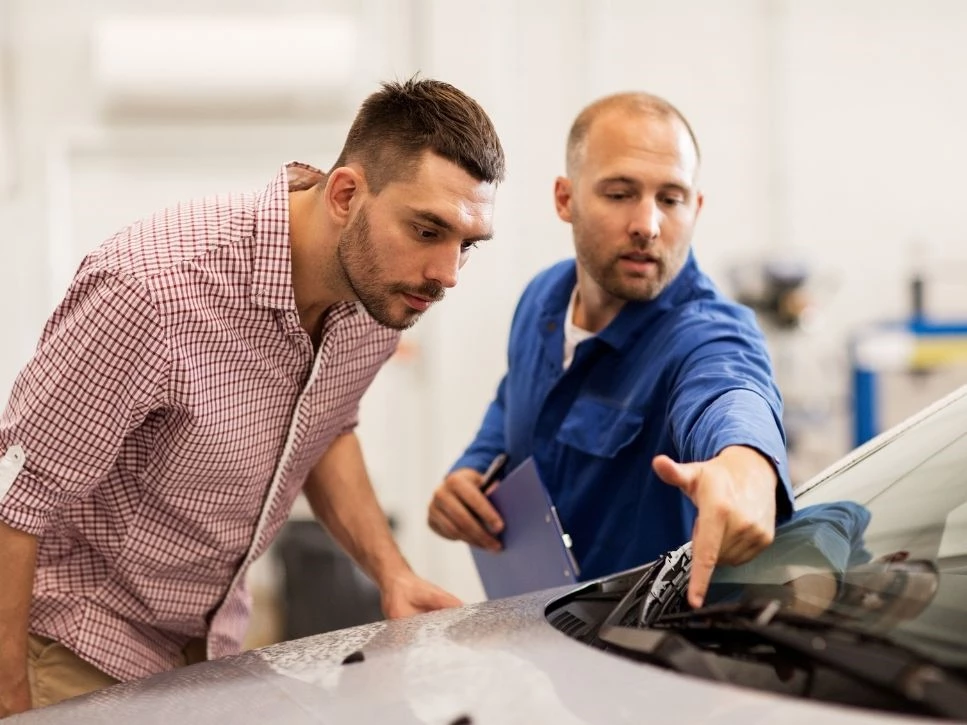
Is Oil on Your Camshaft Position Sensor a Sign of Failure?
Understanding the engine coolant temperature sensor. its functions and how it works.

Mastering ASE Testing - The Ultimate Guide for Success

Keeping Current - Charging System Diagnosis and Repair
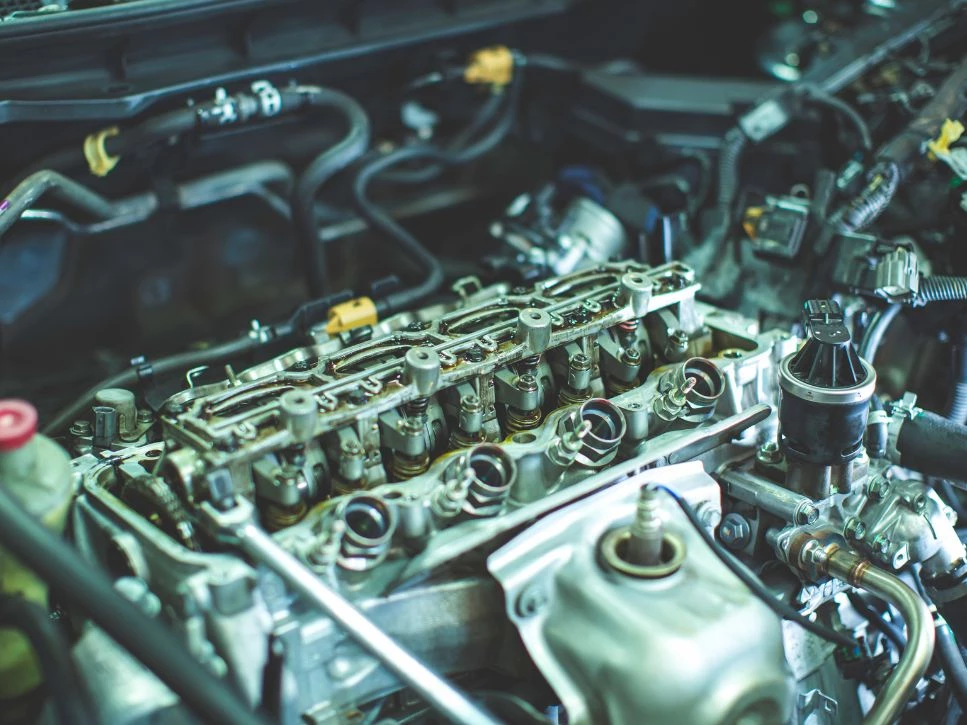
The complete ASE practice test with answers and explanations
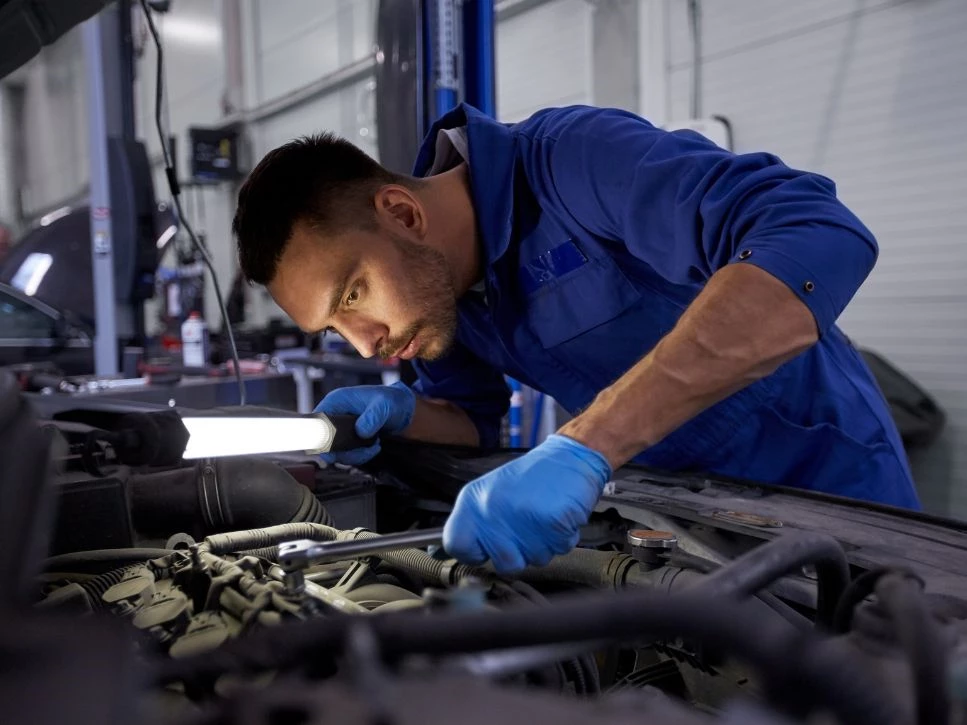
Enhancing the Ride - Accessories Diagnosis and Repair
- What's My Car Worth?
- Buyer's Guide
How to Use Cruise Control Safely
Everything you need to know for safe, stress-free driving with your car's cruise-control system.

Its Job Is to Maintain Speed
Cruise control's primary function is to maintain the speed of your choosing, relieving you of needing to keep your foot on the throttle. Virtually all cars on the road today rely on an electronic control module—a computer—to monitor the vehicle's speed and to readjust it as needed to hold the speed you've chosen regardless of the road's gradient.

Know the Controls
You operate cruise control by either a stalk on the steering column or several buttons on the steering wheel. These include an on-off switch; a "set" button to select the speed you want the car to maintain; and buttons or switches marked "+" and "—" that increase or decrease the speed after it has been set, often in 1-mph increments. A "cancel" button disengages the cruise-control system without shutting it off entirely, allowing the car to coast. (Cars with stalk-operated cruise control have a "cancel" position that you move the stalk to in order to disengage the system.) A "resume" function or button brings the car back to its previously set speed. Braking or depressing the clutch at any time will also cancel cruise control. Should you need to make a quick pass, you can always override the preset speed by simply pressing down further on the gas pedal.
Adaptive Cruise's Added Features
Many newer cars offer what's known as adaptive cruise control, sometimes also called active cruise. It works in the same way as conventional cruise systems and additionally relies on front-mounted radar , cameras, or sensors to detect the presence of vehicles directly ahead in your lane. This enables adaptive cruise-control systems to maintain a set distance from the vehicle in front no matter how it varies its speed.
Adaptive systems allow you to adjust how closely your vehicle follows the one ahead but are programmed so that they always maintain at least a safe minimum following distance. Some of these systems also have the ability to brake and even come to a complete stop in city traffic and, depending on the vehicle, automatically accelerate without the driver pressing the gas pedal when traffic starts to move again.
Semi-Autonomous Cruise Control
Finally, the newest, most advanced cruise control systems, such as such as Nissan ProPilot Assist, Subaru EyeSight, and Audi Traffic Jam Assist, are semi-automated driving assistants that combine adaptive cruise control with lane-keeping assist, which self-steers the car gently to keep it in lane if you let it wander out—although you can only take your hands off the wheel for a few seconds before the system sounds alarms and then shuts off.
.css-1rvrtxn{font-family:Gliko,Gliko-fallback,Gliko-roboto,Gliko-local,Georgia,Times,Serif;font-size:1.625rem;line-height:1.2;margin:0rem;-webkit-text-decoration:underline;text-decoration:underline;text-decoration-color:#DBCA8B;text-decoration-thickness:0.25rem;}@media(max-width: 48rem){.css-1rvrtxn{font-size:2.25rem;line-height:1.1;}}@media(min-width: 48rem){.css-1rvrtxn{font-size:2.625rem;line-height:1.1;}}@media(min-width: 64rem){.css-1rvrtxn{font-size:3rem;line-height:1.1;}}.css-1rvrtxn b,.css-1rvrtxn strong{font-family:inherit;font-weight:bold;}.css-1rvrtxn em,.css-1rvrtxn i{font-style:italic;font-family:inherit;} No matter what type of cruise control your car has, the rules for using it safely are the same.
Most of these systems also can autonomously negotiate only the most gentle curves on the interstate. Some semi-autonomous systems, such as those from Tesla and Mercedes-Benz , can do more, including steering the car into the adjacent lane while keeping enough distance from other cars.
Follow These Safety Rules
No matter which type of cruise control your car has, the guidelines for using it effectively and safely are the same:
- Always remain alert and aware of other traffic, and be ready to take control and brake or steer around obstacles, inattentive drivers, or emergency situations.
- Think of even the most advanced adaptive and semi-autonomous cruise control systems as "dumb." They are programmed by humans and may react unpredictably in certain, unforeseen conditions. (See previous point: "remain alert.") Rain, snow, and fog can obscure radar signals and confuse cameras or sensors, sometimes disabling adaptive cruise control entirely. As with conventional cruise control, with an advanced cruise system you must always be prepared to take full control at a moment's notice.
- Cruise control is still best suited for use on highways and in light traffic. If your vehicle has conventional (not adaptive) cruise control, be sure to leave adequate spacing between your car and those ahead, and be prepared to disengage the system by braking or tapping "cancel" as you creep up on other vehicles or get into heavy traffic.
- Do not use cruise control in slippery conditions, including snowy or icy roads or rain-soaked roads awash in deep puddles. Most cruise systems will attempt to maintain your speed until you intervene, and on slippery roads that could cause you to momentarily lose traction, upsetting the car and potentially precipitating an accident.
Treat cruise control as a simple labor-saving convenience, however—but one that must be monitored—and you'll enjoy many miles of comfortable, stress-free travel.
Clifford Atiyeh is a reporter and photographer for Car and Driver , specializing in business, government, and litigation news. He is president of the New England Motor Press Association and committed to saving both manuals and old Volvos.

.css-190qir1:before{background-color:#000000;color:#fff;left:0;width:50%;border:0 solid transparent;bottom:48%;height:0.125rem;content:'';position:absolute;z-index:-10;} Features .css-188buow:after{background-color:#000000;color:#fff;right:0;width:50%;border:0 solid transparent;bottom:48%;height:0.125rem;content:'';position:absolute;z-index:-10;}
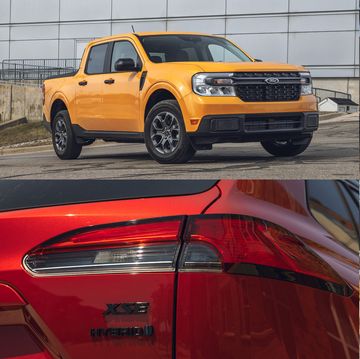
Ezra: I Wrote a Racing Movie to Destroy All Others
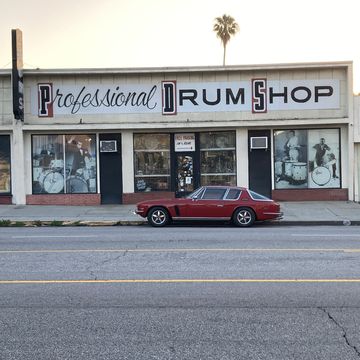
Elana Scherr: Ghostbusting, Collector-Car Style
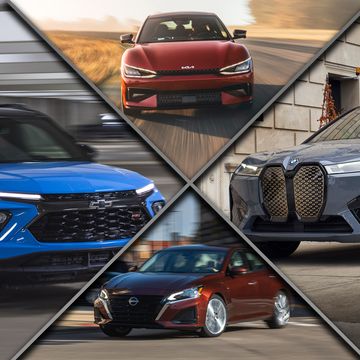
Gas vs. Electric Cars: Pros and Cons of Each
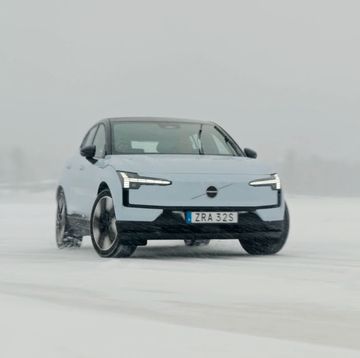
The 2025 Volvo EX30 and the Scandinavian Flick
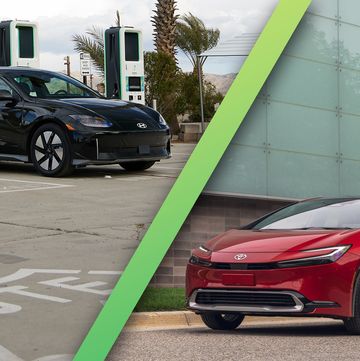
Electric vs. Hybrid Cars: Pros and Cons of Each
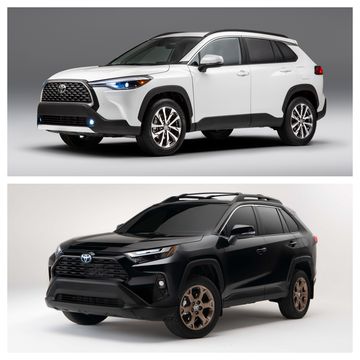
Toyota Corolla Cross vs RAV4: How They Compare
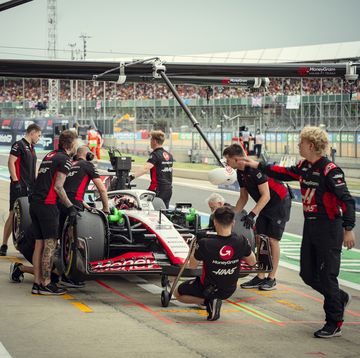
What to Watch: TV Series and Movies for Gearheads
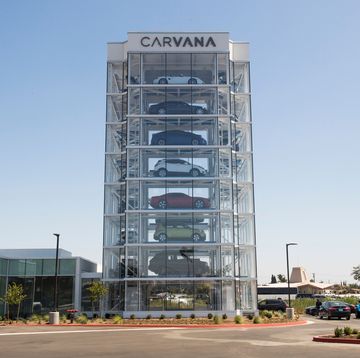
Carvana Starts the Slow Climb Back Up to Recovery
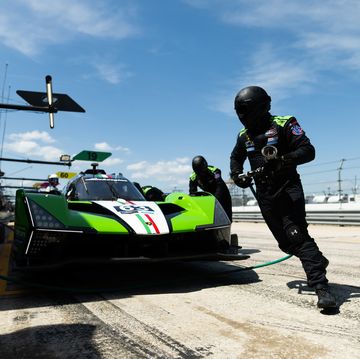
Infield Action at the 2024 12 Hours of Sebring
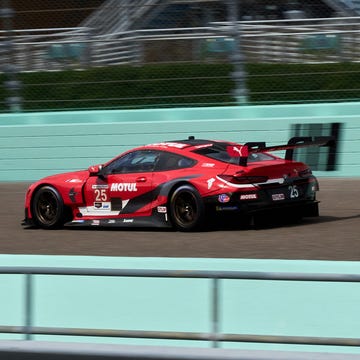
Driving Historic BMW Race Cars Is a Flat-Out High
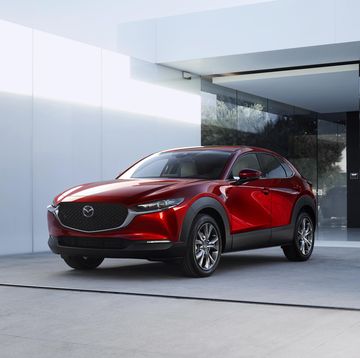
Best Under-$300 Lease Deals for March 2024
Cruise Control In Cars Explained (And How To Safely Use It)

Have you ever wished you could set your car's speed and just sit back and relax while driving on a long stretch of highway? If that's the case, then cruise control is just the ticket you've been searching for—and the good news is, it's a standard feature in most cars these days!
Cruise control is a handy feature for drivers that allows you to maintain a constant speed without having to keep your foot on the gas pedal. In this post, we'll explore how cruise control works, its benefits, and how to use it safely to make your driving experience more comfortable.
Understanding Cruise Control
Cruise control, also known as speed control, is an electronic system that allows you to maintain a specific speed without manually controlling the accelerator pedal. The system uses sensors and electronic components to control the throttle and keep your car moving at a desired speed. First introduced in the late 1950s, cruise control has since become a standard feature in most modern vehicles you see on the road today.
How Does It Work?
At its core, cruise control involves a series of sensors that monitor the vehicle's speed and a control unit that regulates the throttle. When the driver sets the cruise control to a specific speed, the system adjusts the throttle to maintain that speed. If the car begins to slow down because of an incline (e.g. going up a hill), the system will open the throttle to accelerate. Conversely, if the car starts to speed up due to a declin (e.g. going downhill), the system will close the throttle to decelerate.
Modern cruise control systems also come with additional features like adaptive cruise control (ACC), which uses radar or cameras to detect vehicles ahead and automatically adjusts the speed to maintain a safe following distance (more on this BELOW).
The History of Cruise Control
The invention of cruise control can be traced back to the late 1940s and early 1950s, when engineer Ralph Teetor developed the first-speed control system. This innovative feature was designed to help drivers maintain a steady speed, reduce fatigue while driving, and improve fuel efficiency. Over the years, cruise control technology has undergone significant advancements, leading to the development of sophisticated systems like adaptive cruise control.
Types of Cruise Control Systems
Today, drivers can choose from a range of cruise control systems, each with its own unique features and functionalities.
Conventional Cruise Control
Conventional cruise control is like your old reliable friend. It's pretty basic and doesn't have any fancy bells and whistles. You just set the speed you want, and it'll keep your car cruising along at that speed, no problem. It's perfect for those long drives on open highways, but it doesn’t automatically react to other cars on the road.
So, if the car in front of you slows down, you'll need to step in and adjust your speed manually. This trusty system comes standard on most cars and is great for saving some fuel on those long road trips .
Adaptive Cruise Control (ACC)
Now, if conventional cruise control is your old reliable friend, then Adaptive Cruise Control (ACC) is like that friend's tech-savvy younger cousin. ACC isn't just maintaining your set speed, it's also keeping an eye on the car in front of you. If that car slows down, ACC slows your car down to keep a safe distance .
It's like having an extra set of eyes on the road, making highway driving a breeze. Plus, some ACC systems can even handle stop-and-go traffic, bringing your car to a full stop and then picking up speed again when traffic gets moving.
Predictive Cruise Control
Predictive Cruise Control is like the fortune teller of cruise control systems. It uses GPS and map data to see into the future and predict what's coming up on the road, like hills or curves, and adjusts your speed accordingly. This means you get a smoother ride and better fuel efficiency, but it all depends on the quality of the GPS and map data. If that's a bit out of date, your fortune-telling cruise control might not be so accurate. It's usually found in more high-end vehicles where top-notch fuel efficiency is a focus for the engineers.
Cooperative Adaptive Cruise Control (CACC)
And then we have Cooperative Adaptive Cruise Control, or CACC. This is like the team player of cruise control systems. It allows cars to talk to each other, coordinating their speeds to maintain a safe distance. It's like having a well-coordinated team of cars all working together to make the traffic flow smoother and reduce congestion. Picture it like a synchronized dance on the highway, where every car knows its place and keeps the right distance. This tech is still pretty new, but it's got a lot of potential. Imagine a future where traffic jams could be a thing of the past.
Remember, these systems are here to make your drive smoother and safer, but they're not a replacement for your attention. No matter how fancy your cruise control is, these systems can be greatly influenced by external conditions like weather and traffic, and they should always be used as aids, not replacements, for attentive driving.
Common Cruise Control Symbols and Indicators
Understanding the various symbols and indicators associated with cruise control is important for safe and effective usage. These symbols typically appear on the dashboard (or on the side of the steering wheel) and may include a speedometer icon, "SET," "RES" (resume), and "CANCEL". Be sure to consult your vehicle's owner's manual for specific details and explanations of these symbols.
Benefits of Using Cruise Control
Cruise control offers several benefits to drivers, especially during long road trips or highway driving.
Fuel Efficiency
One of the main advantages of using cruise control is improved fuel efficiency. By maintaining a constant speed, cruise control helps reduce fuel consumption, leading to better gas mileage. Rapid acceleration and deceleration, on the other hand, can lead to increased fuel consumption.
Comfort and Convenience
Cruise control allows drivers to take their foot off the accelerator pedal, reducing fatigue and improving comfort during long drives. It also helps drivers avoid unintentionally exceeding the speed limit by setting a maximum speed.
When used correctly, cruise control can contribute to safer driving. By maintaining a steady speed, it reduces the likelihood of erratic driving behavior and potential accidents. However, it is important to note that cruise control shouldn't be used in certain conditions, such as heavy traffic or slippery roads .
Troubleshooting Common Cruise Control Issues
Occasionally, you may encounter issues with your cruise control systems. Common problems include cruise control not engaging or disengaging unexpectedly. Possible causes may include a faulty brake light switch, malfunctioning sensors, or issues with the control module. If you experience any problems with your cruise control, it's best to have a qualified technician diagnose and repair the issue for you.
Cruise Control and Road Etiquette
Practicing proper road etiquette while using cruise control is essential for a safe and pleasant driving experience. Here are some tips on how to use cruise control courteously:
- Avoid using cruise control in heavy or congested traffic, as it may hinder your ability to react quickly to changing conditions.
- Be mindful of other drivers when setting your speed. Avoid setting a speed that's significantly slower or faster than the flow of traffic.
- If you are in the passing lane and using cruise control, be sure to adjust your speed or temporarily disengage the system to allow faster-moving vehicles to pass.
- Always signal your intentions, such as lane changes or exiting the highway, even when using cruise control.
The Future of Cruise Control Technology
Cruise control technology plays a vital role in the development of autonomous vehicles, or self-driving cars . In autonomous vehicles, cruise control systems work together with other advanced driver assistance systems (ADAS) to enable the vehicle to operate without direct driver input. These systems include lane-keeping assist, automatic emergency braking, and collision avoidance systems.
As autonomous vehicles become more sophisticated, cruise control technology is evolving to support higher levels of automation. For example, some autonomous vehicles are equipped with advanced cruise control systems that can navigate complex traffic scenarios, merge onto highways, and even change lanes autonomously.
While fully autonomous vehicles are still in the developmental stages, the integration of cruise control technology is a big step toward creating safer and more efficient transportation systems.
As automotive tech continues to advance, cruise control systems are becoming more intelligent and capable. Here are some potential developments we can expect to see in the future of cruise control technology:
- Integration of artificial intelligence (AI) to improve decision-making and responsiveness in adaptive cruise control systems.
- Enhanced connectivity and vehicle-to-vehicle (V2V) communication, enabling cars to share information about traffic conditions and coordinate their speeds for smoother traffic flow.
- Greater customization and personalization options, allowing drivers to set preferences for cruise control behavior, such as following distance and speed adjustments.
Overall, the future of cruise control technology holds promise for creating a more seamless and enjoyable driving experience, with a focus on safety, comfort, and sustainability.
Debunking Myths About Cruise Control
Let's address and debunk some common misconceptions about cruise control:
Myth : Cruise control can be used as a substitute for driver attention.
Fact : Cruise control is a driver assistance feature, not a replacement for attentive driving. Drivers should always remain alert and ready to take control when necessary.
Myth : Cruise control increases the risk of accidents.
Fact : When used appropriately, cruise control can contribute to safer driving by maintaining a steady speed and reducing erratic driving behavior.
Cruise control is a valuable feature that can enhance your driving experience by providing comfort, convenience, and fuel efficiency. Remember to use it safely and appropriately based on driving conditions, and always stay attentive while on the road.
If you found this post informative and want to learn more about car features, driving tips, and automotive technology, be sure to subscribe to our newsletter for regular updates. We're here to help you stay informed and enhance your driving experience.
Frequently Asked Questions About Cruise Control
To further enhance your understanding of cruise control, here are answers to some common questions:
Q : Can cruise control be used in all weather conditions?
A : It isn't advisable to use cruise control in adverse weather conditions, such as heavy rain, snow, or icy roads, as it may reduce your ability to respond quickly to changing road conditions.
Q : Can I use cruise control in urban areas with frequent stop-and-go traffic?
A : Cruise control is best suited for open roads and highways with consistent traffic flow. It isn't recommended for use in urban areas with frequent stops or heavy traffic.
Q : Does cruise control work at any speed?
A : Cruise control typically has a minimum speed threshold, below which it can't be engaged. This threshold varies by vehicle, so check your owner's manual for specific information.
About the Author: This article was crafted by the LOOP Marketing Team. Comprising of seasoned professionals with expertise in the insurance industry, our team is dedicated to providing readers with accurate, up-to-date, and valuable information. At LOOP, we're passionate about helping families navigate the world of car insurance, ensuring they get the best coverage at the most affordable rates. Learn more about our mission and values here.
For more insights on auto insurance and other related topics, visit our blog .
Quick Navigation
Check out how much you could save today.
Browse related articles

What Does It Mean When A Car Is A “Lemon”?

How To Repair Your Car Roof After Hail Damage

What To Do When Your Car Gets Stolen
Life has many roads. your weekly navigator is just a click away..
- Available Cars
- Testimonials

- Driving Tips
When You Should & Shouldn’t Use Cruise Control While Driving

Cruise control has long been a popular feature in many vehicles. While it’s somewhat helpful for long trips, it also tempts drivers to sacrifice safety for convenience. However, drivers may have difficulty knowing when it’s safe to use cruise control features on the road. Here’s an overview of what cruise control does and when it’s better to drive manually.
What Is the Difference Between Conventional Cruise Control and Adaptive Cruise Control?
Conventional cruise control is a relatively older form of automatic acceleration that maintains a speed set by the driver. In other words, it doesn’t adapt to surrounding conditions and stays constant until shut off. For example, if you have cruise control set to 60 mph, the vehicle maintains that speed until you manually brake, accelerate, or turn off cruise control.
In contrast, adaptive cruise control (ACC) is a newer form of automatic acceleration that uses radars or sensors to adjust speed. This means that if a car in front of you slows down, the ACC matches their speed. Once the car moves out of the way, ACC returns to the speed you set. The one thing ACC has in common with conventional cruise control is that it stops once you manually alter speed or turn it off.
Can You Break in an Emergency?
Yes, manually braking while using cruise control slows down the vehicle. However, it also shuts off the cruise control settings. If you want to leave cruise control settings on, you may alternatively lower your cruising speed. This may be a button on your wheel or dashboard.
What Are the Benefits of Cruise Control?
There are a few notable benefits of using cruise control instead of accelerating manually. Since the computer handles acceleration, you are less likely to rev the engine. This not only saves gas but also reduces the wear and tear on your engine. In addition, it helps you focus on steering and reduces foot pain from constant pedal usage.
Is Cruise Control Dangerous?
Since the advent of cruise control, there have been a few studies done on its impact on accidents. According to a recent study by the Insurance Institute for Highway Safety (IIHS), drivers speed more often when using cruise control than when driving manually.

This difference was most apparent on limited-access roads with a lower speed limit. In addition, those who disobeyed the speed limit while using cruise control sped faster than those without it.
Contrasting this study is another report by the National Highway Traffic Safety Administration from 2008. They found that ACC accommodated 12 out of 14 braking emergencies. Although the two severe emergencies required driver intervention, drivers intervened quickly enough due to the notifications from the vehicle.
Another thing to remember is how certain cruise control systems work in low visibility settings. Adaptive cruise control can be particularly dangerous when driving in fog or other low visibility instances. This is because the sensors may not work properly if they can’t detect other vehicles or objects. You may be lulled into a false sense of security in low-visibility driving conditions if you’re accustomed to your ACC alerting you.
So does this mean that cruise control is dangerous? Yes and no. Ultimately, cruise control has the potential to encourage drivers to make poor decisions. However, if drivers maintain a safe speed and remain vigilant, ACC helps reduce accidents. Despite this, it’s best to use the cruise control only when necessary.
The Best Times to Use Cruise Control
The primary purpose of cruise control is to help drivers avoid foot fatigue while driving for long periods, such as road trips. Thus, you should use cruise control only when driving on a highway or interstate in dry conditions. Even then, make sure to keep your feet near the pedals and follow the posted speed limit. If it’s raining or if there’s low visibility, it’s best to drive manually instead.
When Not to Use Cruise Control
Although modern forms of cruise control have many automatic safety features, there are times when they don’t help.
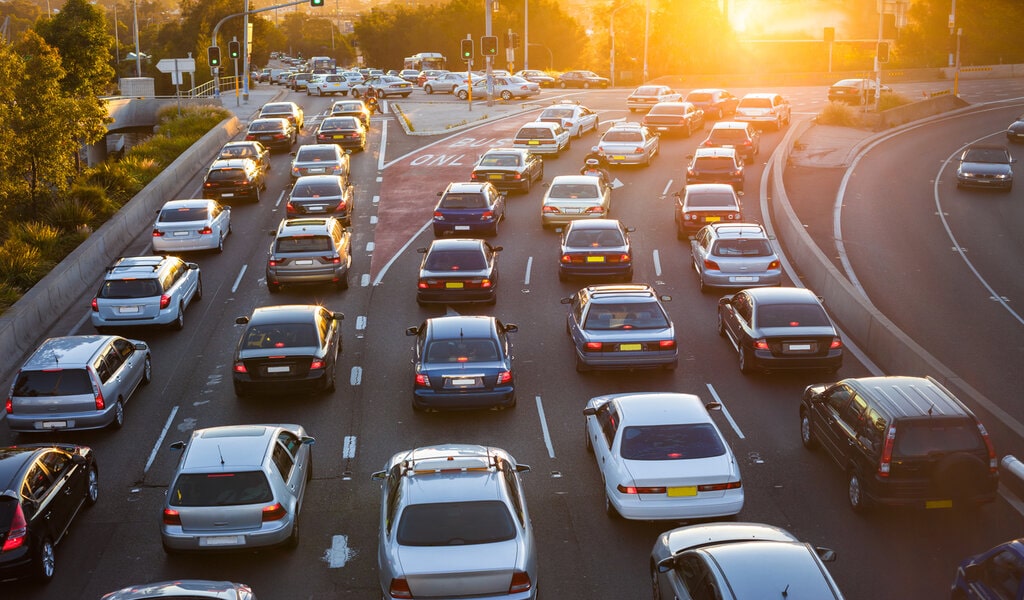
If drivers find themselves in serious accidents while using cruise control, they should contact an experienced injury lawyer as soon as possible.
To stay safe and avoid accidents while using cruise control, here are a few tips to follow while you drive:
- Driving around town – As mentioned before, cruise control is best suited for driving on long stretches of highway. Driving around town has many more variables, such as pedestrians, cyclists, etc. Enabling cruise control, if your vehicle allows you to at low speeds, is dangerous in this regard.
- You are sleepy or fatigued – Some may think that cruise control makes driving easier when tired. However, since it takes your attention away from the road, it increases your risk of falling asleep at the wheel. In addition, cruise control doesn’t steer your car or brake for you.
- The roads are wet or icy – Even if your vehicle has traction control, it’s safer driving manually during adverse weather conditions . Cruise control may cause an accident by spinning your wheels faster when they don’t catch. This leads to hydroplaning in many scenarios.
- Driving on winding roads – When going around corners or curves, you must brake to maintain control of the vehicle. However, cruise control prevents this by maintaining a constant speed, even around corners.
- You encounter heavy traffic – If you use cruise control on the highway, you should disengage it once traffic slows. Conditions on a highway may change at any time, so try exercising caution if you encounter congestion or other traffic issues.
- When you’re unfamiliar with the controls – It’s always best to familiarize yourself with the controls in the vehicle. This goes for everything on the dashboard, but it’s especially true for cruise control. If you find yourself fumbling around trying to switch it on, it’s best just to drive manually. This situation usually arises when you get a new car, are driving a rental, or have borrowed a car.
By following these steps, you’ll keep you and your passengers safe from conditions that may lead to a car accident.
In short, cruise control isn’t inherently dangerous, but it isn’t always the safest option either. If you are on a long road trip and the highway is relatively straight, cruise control may help reduce foot fatigue. However, if it’s raining or if there’s a lot of traffic, it’s better to drive manually just in case. Understanding these nuances is essential and empowers drivers to make safer decisions while on the road.

8 passengers got stuck in port after a late return. What to do if you miss your cruise.

A group of Norwegian Cruise Line passengers was left behind after returning late to their ship in Africa.
Eight guests missed the last tender back to Norwegian Dawn while the ship was visiting the island nation of São Tomé and Príncipe on Wednesday, according to a spokesperson for the line. They were on a tour not organized through Norwegian.
Two guests, Jay and Jill Campbell, told South Carolina’s ABC 15 News their tour went longer than expected. When they returned, the ship was still in port, and the captain declined to let them board despite numerous attempts to reach Norwegian. At one point, they said, the island nation’s coast guard took them to the ship on a boat but told them to return to shore.
“The captain could have made an easy decision to turn one of the tender boats back, pick us up, safely load us, and then go on the way," Jay Campbell told the outlet.
'I just felt so helpless': Carnival Sunrise cruise ship faces flooding
“When the guests did not return to the vessel at the all-aboard time, their passports were delivered to the local port agents to retrieve when they returned to the port, as per the regular protocol,” the Norwegian spokesperson said in an emailed statement. “Our team has been working closely with the local authorities to understand the requirements and necessary visas needed for the guests to rejoin the ship at the next available port of call.”
Since then, the passengers have been scrambling to catch up to the cruise. Here’s what to do if you get stranded during a stop and how to minimize the chance of being left behind:
What happens if I don’t get back to my cruise in time?
Cruise lines warn guests they may get stuck if they don’t return to the ship by the stated all-aboard time.
“While this is a very unfortunate situation, guests are responsible for ensuring they return to the ship at the published time, which is communicated broadly over the ship’s intercom, in the daily print communication and posted just before exiting the vessel,” the Norwegian spokesperson said.
Cruise ships are on tight schedules while in port, said Joanna Kuther, a New York City-based travel agent and owner of Port Side Travel Consultants. “So if they have to leave at a certain time, they have to leave at that time,” she said. “It could be that there's another (ship) coming in. It could be (that) people aren't going to be there to be working on the pier.”
The Campbells told ABC 15 News that they traveled through six countries for 15 hours to reach Gambia, where the ship was due to stop on Monday. However, the vessel was unable to dock due to low tides. Norwegian said it made the change “due to adverse weather conditions, as well as tidal restrictions that require specific timing for safe passage.”
“While we share in our guests’ disappointment, this modification was made with great consideration for their safety and that of our crew, which is our top priority,” the spokesperson added.
The cruise line authorized them to rejoin the ship in Dakar, Senegal, on Tuesday.
Kuther recommended guests who miss their all-aboard time contact the cruise line to let them know and reach out to their travel agent – if they have one – who can help handle the logistics. She said the nearest U.S. embassy may also be able to assist them.
Are travelers responsible for added expenses?
Travelers who do not board their ship in time are generally responsible for getting themselves to the next port of call, according to Kuther.
Travel insurance won't be much good in that scenario, either.
"Typically travel delay coverage/missed connection coverage is due to a delay of a common carrier such as an airline delay or cancellation for a covered reason which causes you to miss your cruise/tour departure," Meghan Walch, director of product at InsureMyTrip, said in an email. "An excursion supplier not getting you back to your cruise in time is typically not covered."
The Norwegian spokesperson said the cruise line is reimbursing the eight guests for their travel expenses from Banjul, Gambia, to Dakar, but Kuther stressed that kind of compensation is “definitely the exception to the rule.”
How to avoid getting stranded
When choosing a shore excursion, Kuther said it’s safest to book through the cruise line or with another vendor that guarantees to get passengers back to the ship on time or to the next port. Travel agents can help guests find those options, or they can ask operators about their policies directly when booking.
Just in case something does go wrong, travelers should bring a credit card or debit card so they have a way to cover any costs they might incur. Kuther typically recommends bringing an ID “because you don’t want to be carrying around your passport,” but if travelers are going on a private excursion without that kind of guarantee, it’s a different story.
“You probably should have your passport with you because you're going to need it to get on a flight to get to the next port, especially if it's in a different country,” she said.
At the very least, it’s a good idea for travelers to have a photo of their passport on hand, and share a copy with someone back home who is easily reachable.
Story continues below.
Cruise insurance: Should you buy it through a cruise line? Maybe not, experts say
She also recommended they make sure their phone or watch is set to ship time rather than the time of the destination, which may be different (the all-aboard time will be on ship time). “So many people get confused with that,” Kuther said.
To be safe, she suggested guests get back to the ship an hour early if they’re exploring on their own or on a self-booked excursion in case they hit traffic or face other issues.
“It's one of those things like, it's not a problem until it's a problem,” Kuther said. She urged travelers not to expect the ship to wait. “If they can, I'm sure they will, but I would never tell someone, ‘Don’t worry about it.’”
Nathan Diller is a consumer travel reporter for USA TODAY based in Nashville. You can reach him at [email protected]
- Bahasa Indonesia
- Slovenščina
- Science & Tech
- Russian Kitchen
Why has coronavirus not closed the Moscow Metro… yet?

The Moscow Metro won’t be closing down because of the coronavirus outbreak, the city’s mayor, Sergei Sobyanin, has promised. “The Metro is technologically designed in such a way that trains should run all the time, circulating air, to ensure that all the networks are in good working order,” he said on the Rossiya 1 TV channel. He was answering questions about the measures the city is taking against the coronavirus. If the metro were stopped now, it would take six months to bring it back to full operation later. “Therefore under all circumstances the metro will continue to run.”
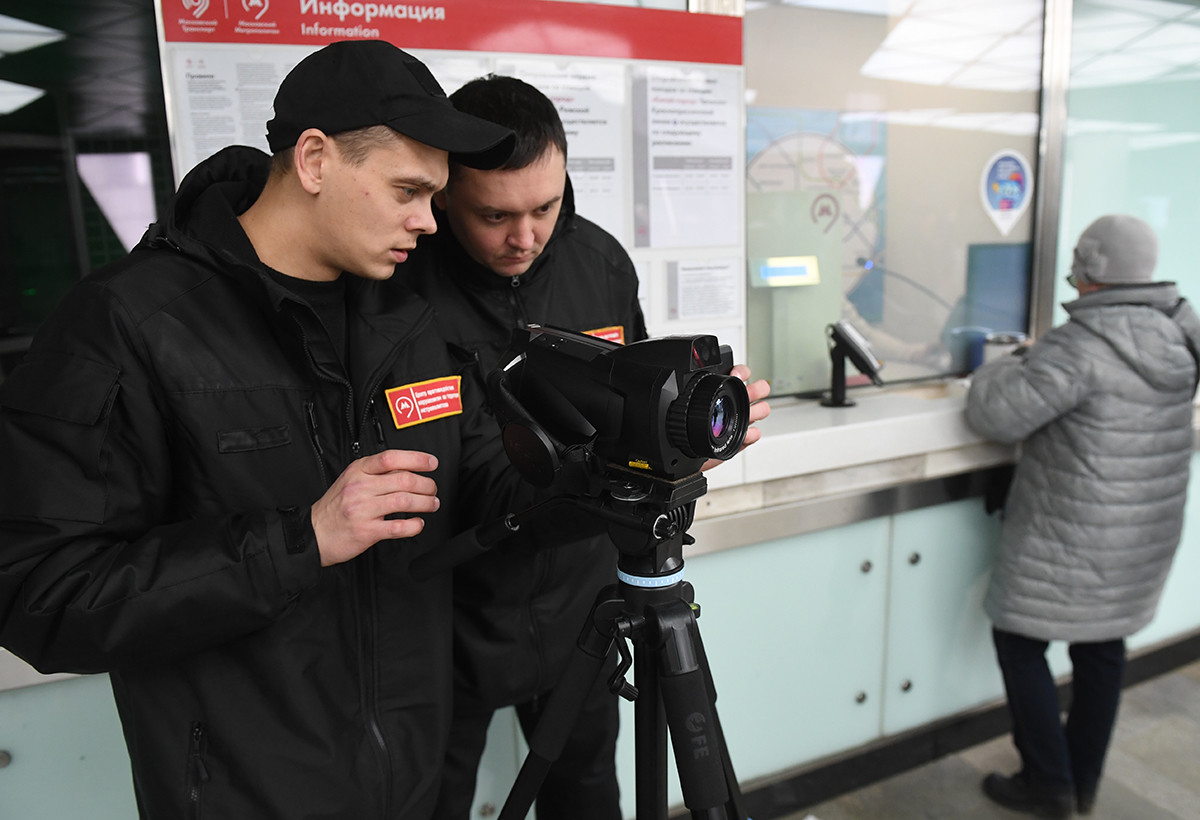
What would happen if the metro was shut down?
The Moscow Metro could still technically be closed to passengers, according to Russian experts: Quarantine measures of this kind were introduced in Wuhan, one of China's largest cities, as well as in Kiev, Ukraine.
Moscow does close down some sections of the Metro for repairs from time to time.
But it is not a question of merely turning off the lights and letting employees go home: metro staff need to continue to monitor ventilation systems and the condition of the tracks.
But there is the question of what would happen to the city, if the Moscow Metro were even partially closed down, and to what extent other measures would be able to compensate for the closure, according to Pavel Zyuzin, senior research fellow at the Center for Research of Urban Transport Problems, GeoPractice Managing Partner.
“Overground transport must be ready, and, above all, the procedure for online deliveries of food, medicines and other essential goods must be simplified as far as possible, because they will be most affected. And, of course, this would entail a massive increase of road users in the city,” Pavel says. He recalls that Moscow has experienced interruptions in the movement of trains before.
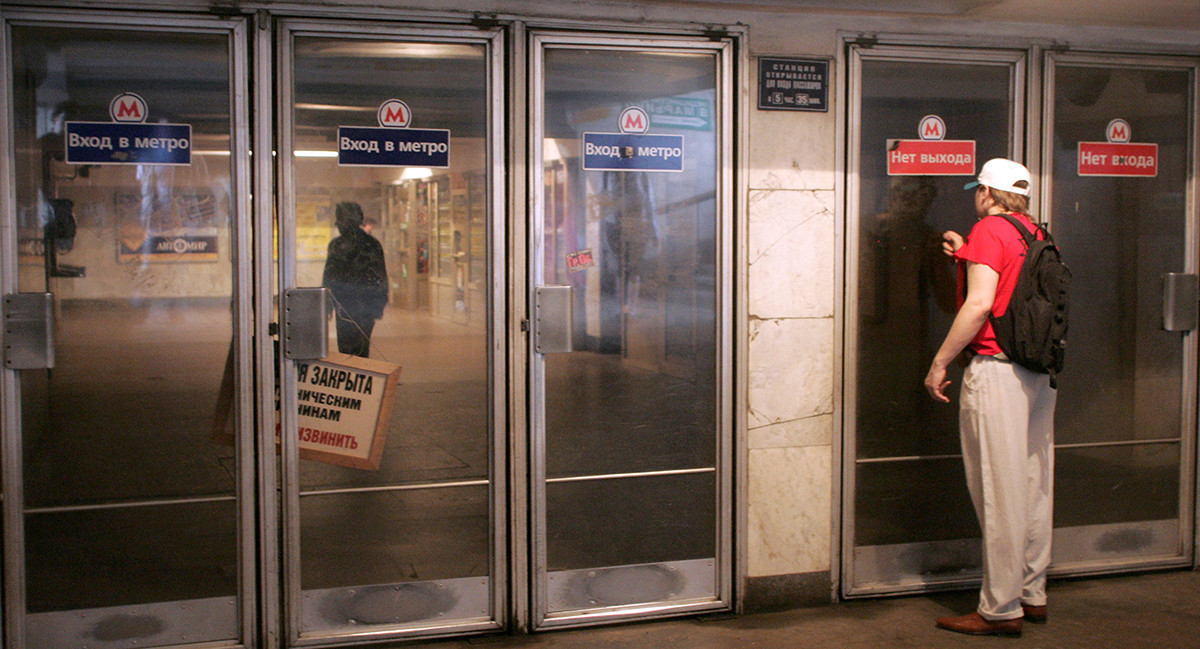
The one that had the biggest impact was the accident on May 25, 2005, which allegedly happened, due to a power grid overload in the city. As a result of the massive temporary blackout, the movement of trains came to a halt at 52 of the 170 Metro stations at 11 o’clock in the morning. Thousands of passengers had to be evacuated from trains stuck in tunnels, and there was no light anywhere. The operation of the Moscow Metro was only fully restored by nine o’clock in the evening.
Have there been occasions when the Metro wasn’t running at all?
In actual fact, since its opening in 1935, the Moscow Metro has carried passengers every day. It still remains the most popular form of public transport in the city (in 2019, it was used by over 9.5 million people a day!). It is hard to believe that in all this time there has been just one day when the Metro didn’t open its doors in the morning.
It happened on October 16, 1941. During the Great Patriotic War, the metro continued to carry passengers, despite enemy bombing. Trains ran until ten o’clock in the evening, after which people were accommodated at stations to hide from night air raids on the Soviet capital. Moscow experienced the worst bombing in October and November 1941. And the Soviet leadership even took the decision to destroy the Metro in the event of capture, in order to keep infrastructure facilities out of the hands of the enemy.
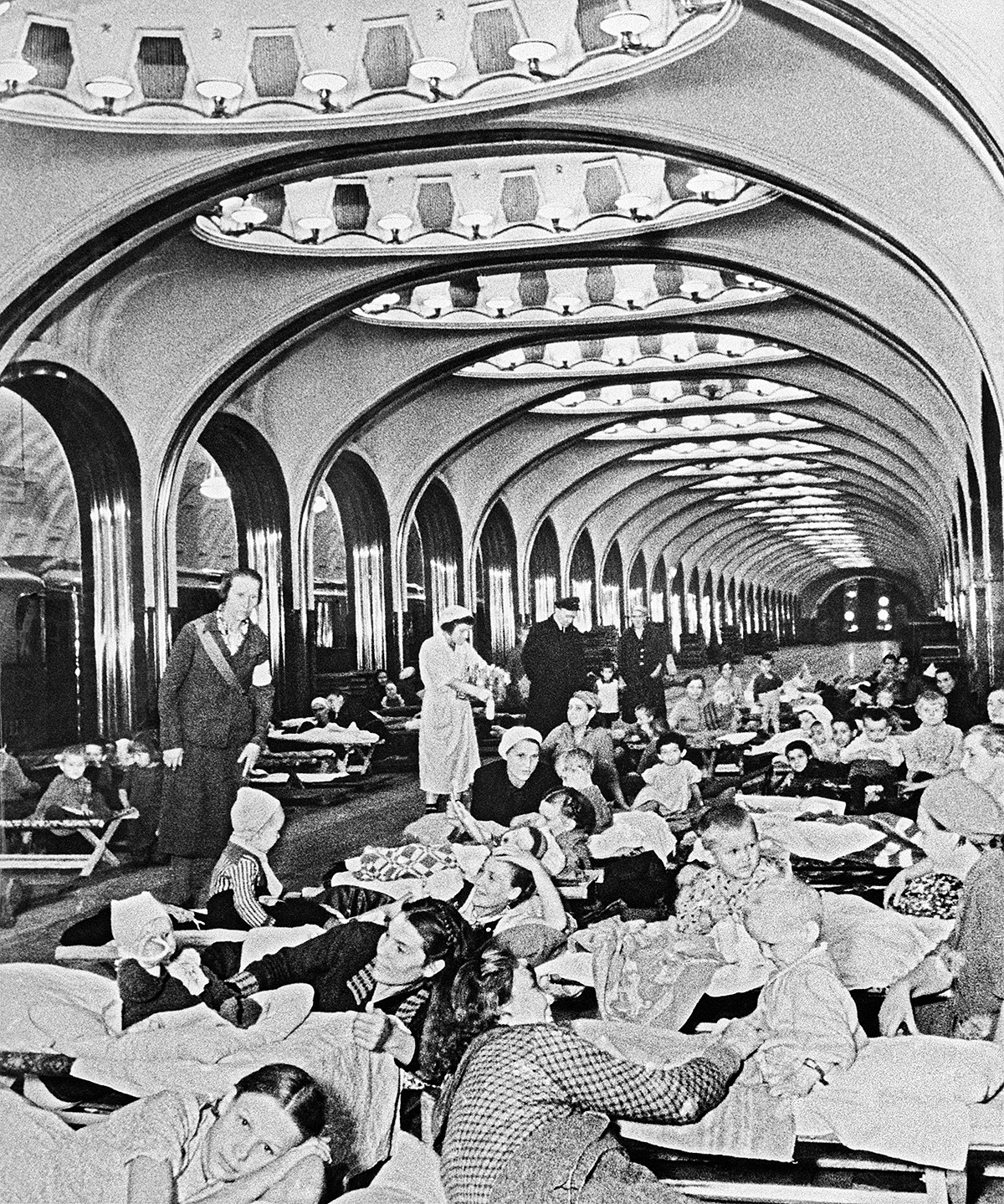
Mayakovskaya metro station, 1941.
On the night of October 15-16, workers started dismantling the escalators and cutting electric cables, but in the morning the decision was revoked. In a matter of hours, everything was brought back to normal and at 6:45 PM, the operation of metro trains resumed. And soon after, the construction of new stations and tunnels resumed as well ( read more here ).
If using any of Russia Beyond's content, partly or in full, always provide an active hyperlink to the original material.
to our newsletter!
Get the week's best stories straight to your inbox
- Why is the Moscow Metro so fast and efficient?
- What went down in the Moscow Metro during WWII? (PHOTOS)
- 7 things you should NEVER do in the Moscow Metro
This website uses cookies. Click here to find out more.

- Breaking News
- University Guide
- Meghan Markle
- Prince Harry
- King Charles III

Putin rounds up illegal migrants to send to the frontline in Ukraine as Vladimir exploits Moscow massacre anti-migrant backlash to find more cannon fodder
- Vladimir Putin yesterday spoke on bringing 'sphere of migration under control'
- Follows multiple arrests of Tajik nationals over Crocus Concert Hall terror attack
By James Reynolds
Published: 11:48 EDT, 27 March 2024 | Updated: 21:50 EDT, 27 March 2024
View comments
Vladimir Putin is rounding up illegal migrants in Russia to fuel his bloody invasion of Ukraine, just days after four Tajik nationals were charged over the Crocus terror attack in Moscow, with migrant groups left fearing bloody retaliation.
Paddy wagons sporting the National Guard insignia arrived at a vast online shopping warehouse in Elektrostal, Moscow today, where thousands of migrant workers were reportedly forced to show their documents.
Checks were carried out by armed and masked Russian guards and military enlistment officers, before at least 40 people were hauled away from the Wildberries warehouse.
More operations in kind are said to be planned, as Putin seeks more cannon fodder for his ongoing war in Ukraine.
It comes just days after the Crocus City Hall atrocity, which led to the deaths of at least 140 people after gunmen stormed a packed concert venue in the capital and indiscriminately targeted civilians before setting the building on fire.
A number of men from Tajikistan have since been detained in connection to the attacks, which have been claimed by jihadist group Islamic State.
Friday's horror attack has been linked to a rise in tensions, with the BBC today reporting an increase in beatings and racism aimed at Central Asian migrants - and the embassy of Tajikistan in Russia warning citizens not to leave their homes unless necessary.

Vehicles emblazoned with Rosgvardiya (Rosguard, the National Police) were seen outside the warehouse in Moscow as officials rounded up illegal migrants, some destined for Ukraine

Critics fear the atrocity in Moscow last week is already leading to discriminatory behaviour towards migrants living in Russia
Some of the migrants detained today will reportedly face the choice of jail or expulsion - or fighting in Ukraine for Russia.
Migrants who have been granted Russian citizenship also express fears they may be called up.
'They check who is on the side of the military, and who is evading,' one said. 'Those who evade can be taken away against their will.'
'Whoever resists is beaten with sticks by the riot police,' said another worker.
A further 38 employees of the warehouse will undergo additional checks with law enforcement to 'clarify' information gathered already, the Wildberries company told state-owned news agency RIA.
It came a day after Putin spoke on the urgency of bringing the 'migration sphere ... under control' at a meeting with the board of the Prosecutor General's Office, RIA noted.
Putin reportedly ordered that measures be handled 'professionally and competently' to 'facilitate the adoption of legal, informed and fair decisions'.
Still, critics fear the atrocity in Moscow last week is already leading to discriminatory behaviour towards migrants living in Russia.
In Novgorod region, it has been prohibited to hire foreign workers in the transport sector.
State Duma deputy Dmitry Gusev has also called for a complete 'audit' of all labour migrants living in the country - as well as those who have recently received Russian citizenship.
In Moscow, a 29-year-old woman from Yakutia was surrounded by a hostile mob on the metro and subjected to vile racist abuse.
'Get the **** out of here,' she was told - even though she is a Russian citizen.
'Russia for Russians, Moscow for Muscovites!
'Africa for blacks, cesspit for Caucasians! Hail Tesak!'

Russian President Vladimir Putin grimaces during an annual expanded Prosecutor General's Office meeting, March 26,2024, in Moscow, Russia

Checks were carried out by armed and masked Russian guards and military enlistment officers, before at least 40 people were hauled away from the Wildberries warehouse

The group reportedly ally with neo-Nazi Maxim Martsinkevich, nicknamed Tesak, meaning Machete, who died from 'asphyxia' in a Russian jail in 2020.
The scared woman said: 'It was 6.30 pm. I was waiting for the train… Very young guys…came up to me.
Putin says Moscow concert gunman were 'radical Islamists' but refuses to say they were from ISIS - as he insists the terrorists had been trying to 'flee to Ukraine'

'One of them, the most active one, took a metal bat out of his jacket and showed me.
'They surrounded me and began to humiliate me… They called me names from the platform based on my nationality and appearance.'
She said no-one came to her aid.
Two of those threatening her were detained today and face questioning.
On Telegram, migrants from Tajikistan have shared messages expressing fears the community in Russia will suffer for the Crocus attack, as reported by the BBC.
Sharing their concern over retributive attacks, one said: 'Please, God, let [the attackers] be Ukrainian instead.'
Russia's Federal Security Service, or the FSB, said it had arrested 11 people the day after the attack, including four suspected gunmen.
Moscow's Basmanny District Court identified the four suspects behind the attack as Dalerdzhon Mirzoyev, 32; Saidakrami Rachabalizoda, 30; Shamsidin Fariduni, 25; and Mukhammadsobir Faizov, 19.
The four men, identified as Tajik nationals, appeared in a Moscow court on Sunday on terrorism charges and showed signs of severe beatings.
One appeared to be barely conscious during the hearing.
The men were charged with committing a group terrorist attack resulting in the death of others. The offence carries a maximum sentence of life imprisonment.
They were all ordered to be held in pre-trial custody until May 22.
Mirzoyev and Rachabalizoda admitted guilt after being charged, according to AP, citing court officials.

A view of the burned Crocus City Hall concert venue following a terrorist attack, March 25

So far, 140 people have died and the death toll is expected to rise

The terrorists who carried out the attack have all been detained and charged with terrorism

All four of them have been beaten and tortured by Russian security forces
While Islamic State has claimed responsibility for the attack, President Vladimir Putin has said the four men were arrested while trying to flee to Ukraine.
Kyiv denies any connection to the attack.
READ MORE: Blundering Belarus dictator Lukashenko destroys Putin's evidence that Zelensky was behind ISIS attack by revealing the terrorists first tried to flee to HIS country, not Ukraine

Putin has made no reference to ISIS' claims.
US intelligence also said after the attack it had information confirming ISIS was responsible for the attack.
Yesterday, head of Russia's Federal Security Service (FSB) Alexander Bortnikov bizarrely pinned blame on the United States, Britain and Ukraine.
Speaking after the meeting with the board of the Prosecutor General's Office, he was asked whether the US, Britain and Ukraine were behind the terrorist attack, according to Russian news agency TASS .
'We believe that this is true. In any case, we are now talking about the factual information we have. This is general information, but they have a long record of this sort.'
'What is [Ukraine] expected to do to demonstrate its capability? It is expected to carry out sabotage and terrorist acts in the rear,' he continued.
'This is what both the chiefs of Ukraine's special services and the British special services are aiming at. US special services have repeatedly mentioned this, too.'
The Crocus Concert Hall was attacked by armed gunmen on March 22, when terrorists opened fire on civilians and set the auditorium on fire in Russia's deadliest attack in 20 years.
According to the latest data, 140 people have been confirmed dead as a result of the attack, the most recent dying in hospital today.
A total of 80 people injured in the attack remain hospitalized, the official added, and 205 others have sought outpatient medical assistance.
The Moscow Times reported today as many as 360 had been injured in the attack.
Three days before the attack, Putin denounced the U.S. Embassy's March 7 notice urging Americans to avoid crowds in Moscow , including concerts, calling it an attempt to frighten Russians and 'blackmail' the Kremlin ahead of the presidential election.
After Britain echoed the notice, Kremlin mouthpieces accused both of 'complicity' if terrorists did hit Moscow.

A view shows the burning Crocus City Hall concert hall following the shooting incident in Krasnogorsk, outside Moscow, on March 22, 2024

ISIS' news agency Amaq released sickening a 90-second selfie video of the attack that is too graphic for MailOnline to share
The news of a terror warning on March 7 came only hours after the FSB claimed to have thwarted an ISIS plot to slaughter Jews in a Moscow synagogue.
It was unclear whether the events are linked.
According to the FSB, a large cache of weapons and bomb parts were found during a raid on an Islamic State cell in Kaluga, southwest of the capital.
Russian state media reported militants had been gearing up to shoot Jewish worshippers at a synagogue in the capital before security officials stormed the premises and gunned them down.
'While being arrested, the terrorists put up armed resistance to the Russian FSB officers, and as a result were neutralised by return fire,' the Russian state-owned TASS news agency quoted the security service as saying in a statement.
- Moscow attack: Central Asian migrants hit by backlash in Russia - BBC News
- www.gazeta.ru/au...
- Number of Wounded in Crocus City Hall Attack Rises to 360 - The Moscow Times
- tass.com/emergen...
Share or comment on this article: Putin rounds up illegal migrants to send to the frontline in Ukraine as Vladimir exploits Moscow massacre anti-migrant backlash to find more cannon fodder
Femail today.

- Follow DailyMail
- Subscribe Daily Mail
- Follow @dailymail
- Follow MailOnline
- Follow Daily Mail

From the Makers of Candy Crush
- Back to top
Published by Associated Newspapers Ltd
Part of the Daily Mail, The Mail on Sunday & Metro Media Group
- Plan a Road Trip
- Plan a Flight
- Find an Airport
- Where to Stay
- All Questions
Distance between Moscow and Elektrostal
Driving non-stop from moscow to elektrostal.
How far is Elektrostal from Moscow? Here's the quick answer if you drive this relatively short distance without making any stops.
Nonstop drive: 36 miles or 58 km
Driving time: 1 hour, 7 minutes
Even though you can drive this distance straight through, it might be more interesting to stop along the way. You can scroll down to calculate how many hours it would take if you drive with stops .
Flying non-stop from Moscow to Elektrostal
Now let's assume you have a private jet and you can fly in the fastest possible straight line between Moscow, Russia and Elektrostal, Russia. Because of the curvature of the Earth, the shortest distance is actually the "great circle" distance, or "as the crow flies" which is calculated using an iterative Vincenty formula.
Flight distance: 33 miles or 52 km
Flight time: 34 minutes
The straight line flight distance is 3 miles less than driving on roads, which means the driving distance is roughly 1.1x of the flight distance.
Your plane flies much faster than a car, so the flight time is about 1/2th of the time it would take to drive.
This is a relatively short flight in a private plane, but you might be planning to book a commercial flight. In that case, your travel time would really need to include how many minutes to get to your local airport, wait for security, board and taxi on the runway, land at the other airport, and get to your destination.
Plan a trip to Elektrostal
Trippy has a ton of information that can help you plan your trip to Elektrostal, Russia. Start by reading the Trippy page on where to stay in Elektrostal . Click the button below to explore Elektrostal in detail.
How far is it the other way?
The distance is the same either way if you're flying a straight line (or driving the same roads back and forth). But for a real trip, there can be plenty of differences so go ahead and check the reverse directions to get the distance from Elektrostal to Moscow , or go to the main page to calculate the distance between cities .
If you happen to know Moscow, don't forget to help other travelers and answer some questions about Moscow!
More info on this route: drive from Moscow to Elektrostal road conditions alternate routes Google driving directions
HOME | MY ACCOUNT |
- Aviation Teamwork
- Company Teamwork
- Medical Teamwork
- Rail Teamwork
- On-line CRM Training Sessions
- ITS Recruiting
Loss of control, B735 on approach to Moscow-Vnukovo
Loss of control, B735 on approach to Moscow-Vnukovo. UTair flight UT588 from Krasnodar to Moscow, Russia, reportedly suffered a loss of control incident while on approach to Moscow’s Vnukovo Airport. Unconfirmed reports from Russian aviation sources suggest that the aircraft was on approach to runway 06 when a situation developed where the aircraft attained a pitch attitude of +45 degrees.
The aircraft rolled 33 degrees to the right, then -34.8 to the left. The pitch supposedly decreased to 30 with the speed dropping to 60 KIAS.
The aircraft is then thought to have rolled 96 degrees to the right, pitching -14 degrees (nose down).
It then banked 45 degrees to the left with speed increasing to 150 KIAS. The flight crew then regained control and reported to ATC that they were going around because the approach was unstabilised.
The crew positioned the aircraft for another approach and proceeded for a landing at 06:35 UTC, about 18 minutes after the event.
The aircraft was still on the ground at Vnukovo, eleven days after the event.
Weather reported about the time of the incident (0617Z): UUWW 130400Z 16004MPS 2000 R24/1600U BR OVC001 08/07 Q1002 R24/290050 TEMPO 1000 -SHRA BR BKN015CB RMK QBB040 UUWW 130500Z 17003MPS 1800 1300SE R24/1300N BR OVC001 08/08 Q1002 R24/290050 TEMPO 0400 FG RMK QBB040 UUWW 130600Z 17003MPS 2100 R24/1600U BR OVC001 09/08 Q1002 R24/290050 TEMPO 0400 FG RMK QBB050 UUWW 130700Z 16002MPS 120V200 4400 BR OVC001 09/09 Q1001 R06/290050 NOSIG RMK QBB050
https://aviation-safety.net/

Have A Question? Simply Contact Us
Integrated Team Solutions Ltd, 1 Friary, Temple Quay, Bristol, BS1 6EA, England
+44 (0) 330 1234 235 +44 (0) 7000 240 240 [email protected]


IMAGES
VIDEO
COMMENTS
It can also be caused by issues with the throttle control system or the ABS. In older cruise control systems, it can be caused by a broken vacuum line. Here is a more detailed list of the possible reasons your cruise control is not working: 1. Blown Fuse. All electrical systems in the vehicle are controlled by fuses.
Current Ride. 2022 ford f350 7.3. 86skier said: About 5-6 times now over the course of the last few weeks, the cruise control on my '22 will randomly shut off going down the highway. Afterwards, you can't just reset it, as none of the cruise buttons will work, can't turn it on, can't shut it off, can't increase or decrease speed.
The first reason your cruise control might turn off by itself is if you're driving too slowly. Most cruise controls have a minimum speed limit that they'll stay engaged at, and if you drop below that speed, the system will automatically disengage. This is to prevent you from accidentally setting your cruise control too low and then having ...
Reason #2. Burnt brake lamp. Some cruise control systems are disabled when the brake lamp is blown. Check your brake lights. If you find a burnt brake light, just replace it and test the system again. Reason #3. Defective brake light switch. A defective pedal switch can also make your cruise control stop working.
7) Loose or Broken Cruise Control Cable. Older vehicles that are equipped with cruise control have two throttle cables - one for the gas pedal and one for the cruise control system. These cables may stretch over time. If the cruise control cable has stretched or is broken, the cruise control system will not be able to operate the throttle ...
Problems with the throttle body. Malfunctioning sensors. Blown fuse and electrical issues. Faulty brake pedal switch. Bad mechanical cruise control cable. All of these reasons can make your cruise control ineffective and the worst thing is if it malfunctions while you are using it.
Cruise control turns off while driving. Possible cause — Damaged speed sensor or actuator, these two could be internally malfunctioning and causing the cruise control to disengage without input from you. Solution — Have a technician or mechanic run a diagnostic with the speed sensor and check the actuator hoses and cables. 3. Cruise control ...
A damaged speed sensor may cause the cruise control not to work properly due to inaccurate readings. Since a damaged speed sensor can also cause problems with the speedometer, it should be fixed right away. 1. Faulty Brake Pedal Switch. When you step on the brake pedal, the brake lights turn on. This is due to the brake pedal switch.
What to Do If Your Cruise Control Gets Stuck. If you find yourself in a situation where your cruise control gets stuck, follow these steps: 1. Stay Calm and Alert. Maintain composure and stay focused on the road. It's important to remain calm to make appropriate decisions and react effectively. 2.
Improper operating conditions, wiring issues, and a faulty throttle actuator are some of the most common reasons why your vehicle's cruise control feature may malfunction. Cruise control systems are different for every make and model. If you're planning on attempting fixes for this feature, make sure to consult a vehicle-specific repair manual.
Check the fuse. You may need to look in the owner's manual to see which one if it's not tagged on the fuse box cover. An aftermarket cruise may have an inline fuse holder in the wiring to the ...
Control Switch - If the internal contacts wear out, the cruise control switch may not contact the CCM. This might disable cruise control altogether, or it might not react to the cancel or accelerate functions. Check Engine Light - This is an indicator of a failing engine or fuel pump, which may, in turn, affect acceleration while cruising.. Vacuum Leak - A vacuum leak may affect the ...
2015 - 2020 Ford F150 - Cruise control intermittently shutting off - This has happened twice in the past two days. While driving home yesterday afternoon the cruise kicked off and it was unresponsive. This morning it worked for about 15 minutes and kicked off again. This time it reset itself and I was able to use it...
Cruise control can be a helpful tool for long distance driving. However, it should not be used when visibility is low or in bad weather conditions. It's important to turn off cruise control when approaching curves or winding roads. Cruise control should also be turned off in heavy traffic situations where abrupt stops and starts may occur.
Cruise control turns off while driving - low cost fix for your cruise controlGet a stalk here: https://www.youtube.com/redirect?event=video_description&v=EHO...
You operate cruise control by either a stalk on the steering column or several buttons on the steering wheel. These include an on-off switch; a "set" button to select the speed you want the car to ...
The Jeep Wrangler Cruise Control can stop working due to a blown fuse, sensor issues, damaged brake pedal switch, faulty actuators, inadequate power supply, and faulty transmission. ... When you apply the brakes while the cruise control is active, the switch sends a signal to the cruise control command center, prompting it to deactivate and ...
Myth: Cruise control increases the risk of accidents. Fact: When used appropriately, cruise control can contribute to safer driving by maintaining a steady speed and reducing erratic driving behavior. Cruise control is a valuable feature that can enhance your driving experience by providing comfort, convenience, and fuel efficiency.
The primary purpose of cruise control is to help drivers avoid foot fatigue while driving for long periods, such as road trips. Thus, you should use cruise control only when driving on a highway or interstate in dry conditions. Even then, make sure to keep your feet near the pedals and follow the posted speed limit.
Kuther recommended guests who miss their all-aboard time contact the cruise line to let them know, and reach out to their travel agent - if they have one - who can help handle the logistics ...
The Moscow Metro won't be closing down because of the coronavirus outbreak, the city's mayor, Sergei Sobyanin, has promised. "The Metro is technologically designed in such a way that trains ...
Stranded 80-year-old Norwegian Cruise passenger suffered a stroke and was left 'alone' to find her way back to the US from remote African island after vessel's medical team decided she needed ...
Let's say you're actually planning a road trip to Elektrostal, and you want to stop on the way to explore. If it's a real road trip, you might want to check out interesting places along the way, or maybe eat at a great restaurant. That's what Trippy is perfect for, helping you figure out travel plans in detail. Road trip: 1 day of driving
UTair flight UT588 from Krasnodar to Moscow, Russia, reportedly suffered a loss of control incident while on approach to Moscow's Vnukovo Airport. Unconfirmed reports from Russian aviation sources suggest that the aircraft was on approach to runway 06 when a situation developed where the aircraft attained a pitch attitude of +45 degrees.